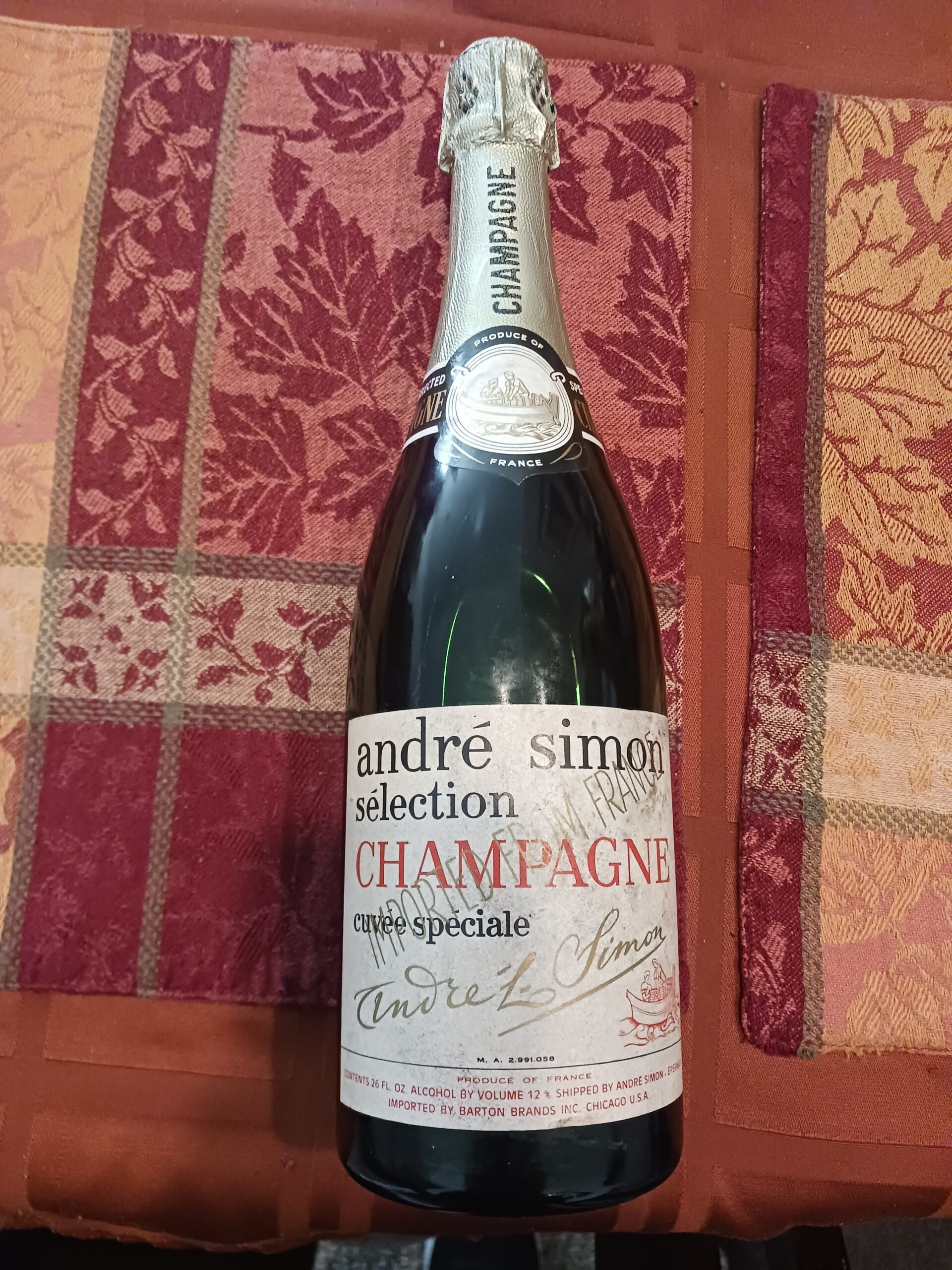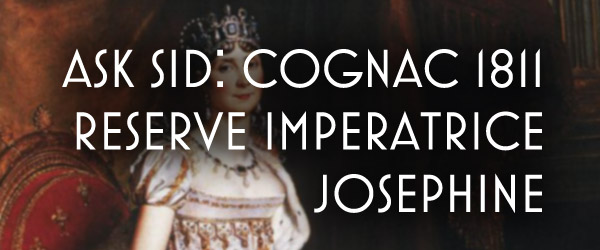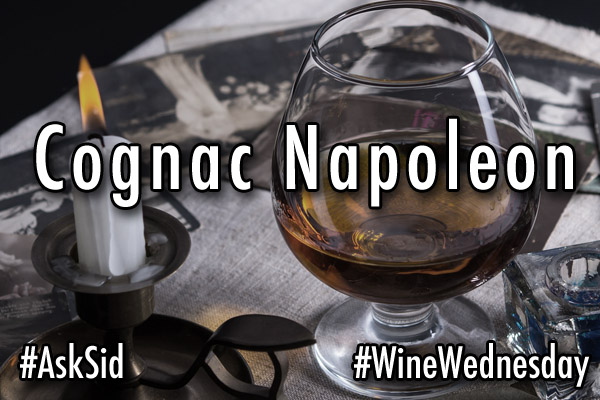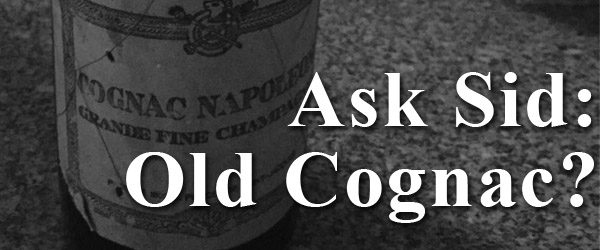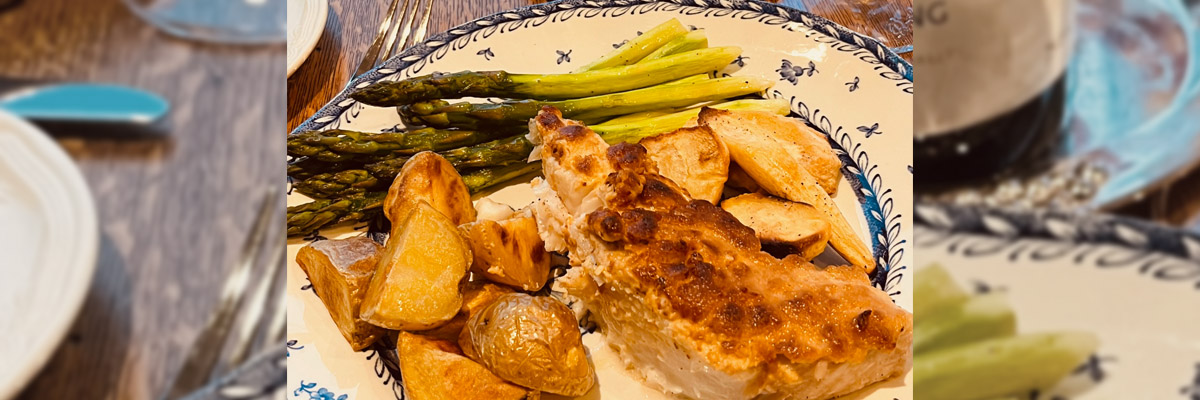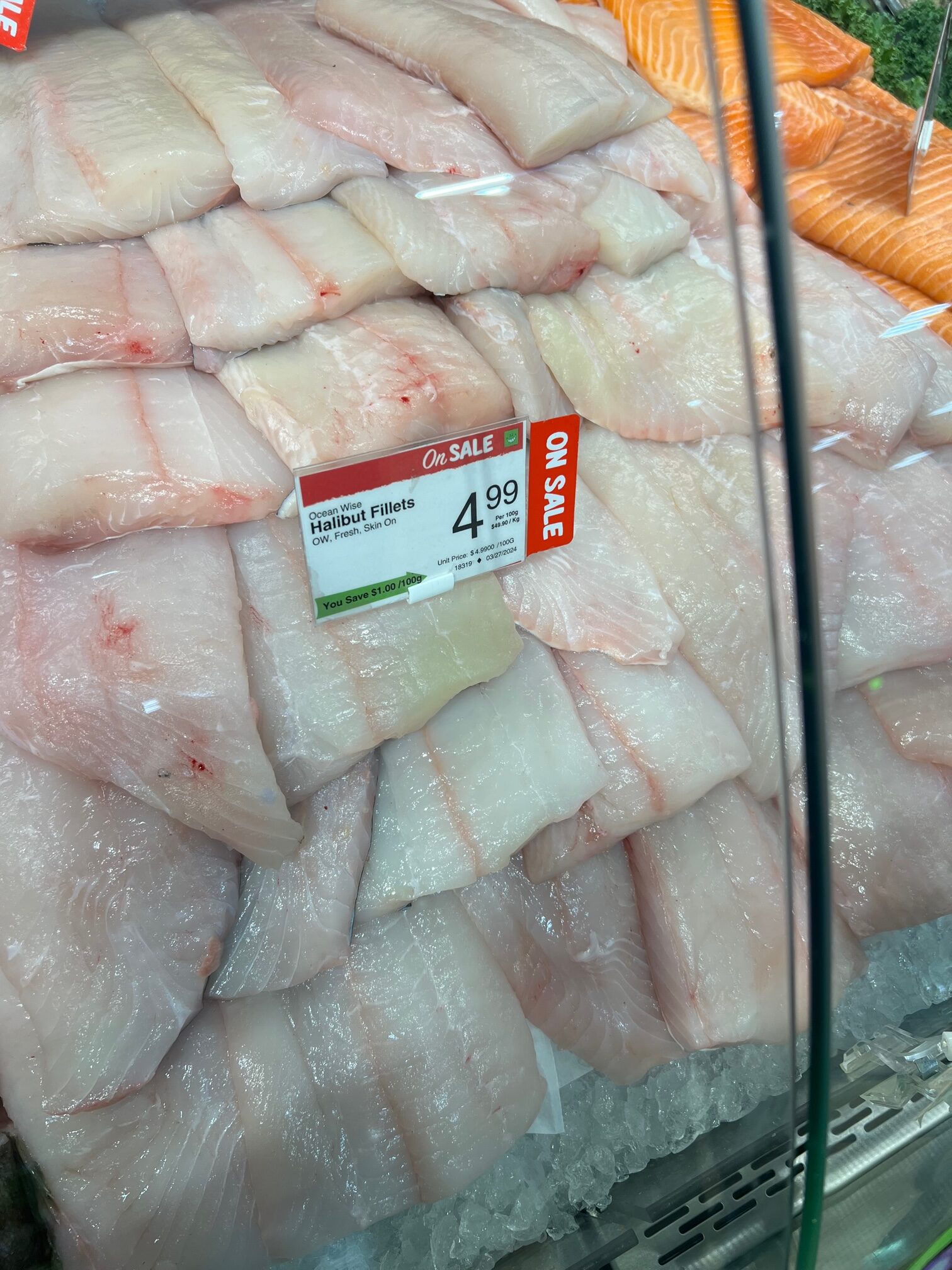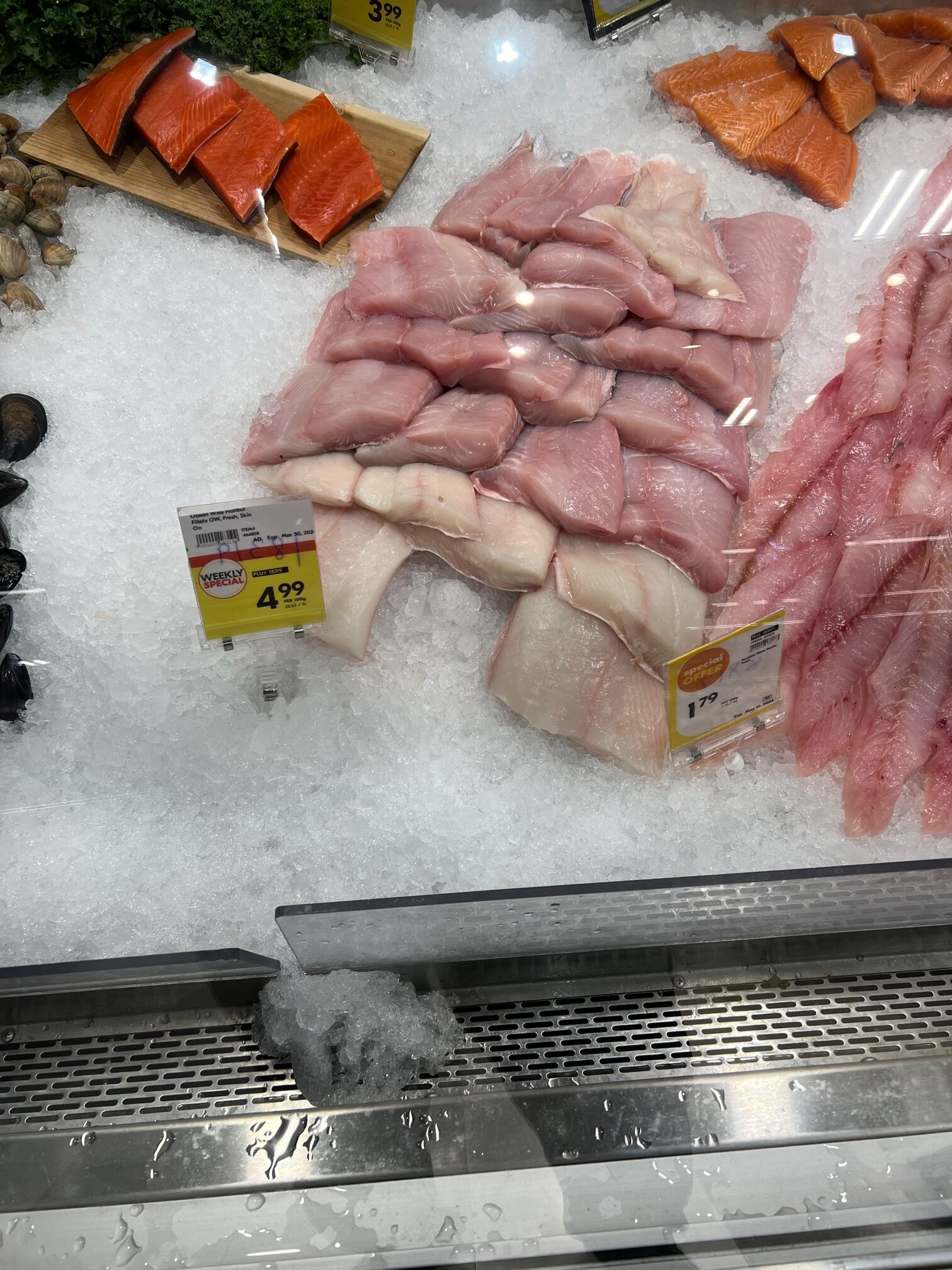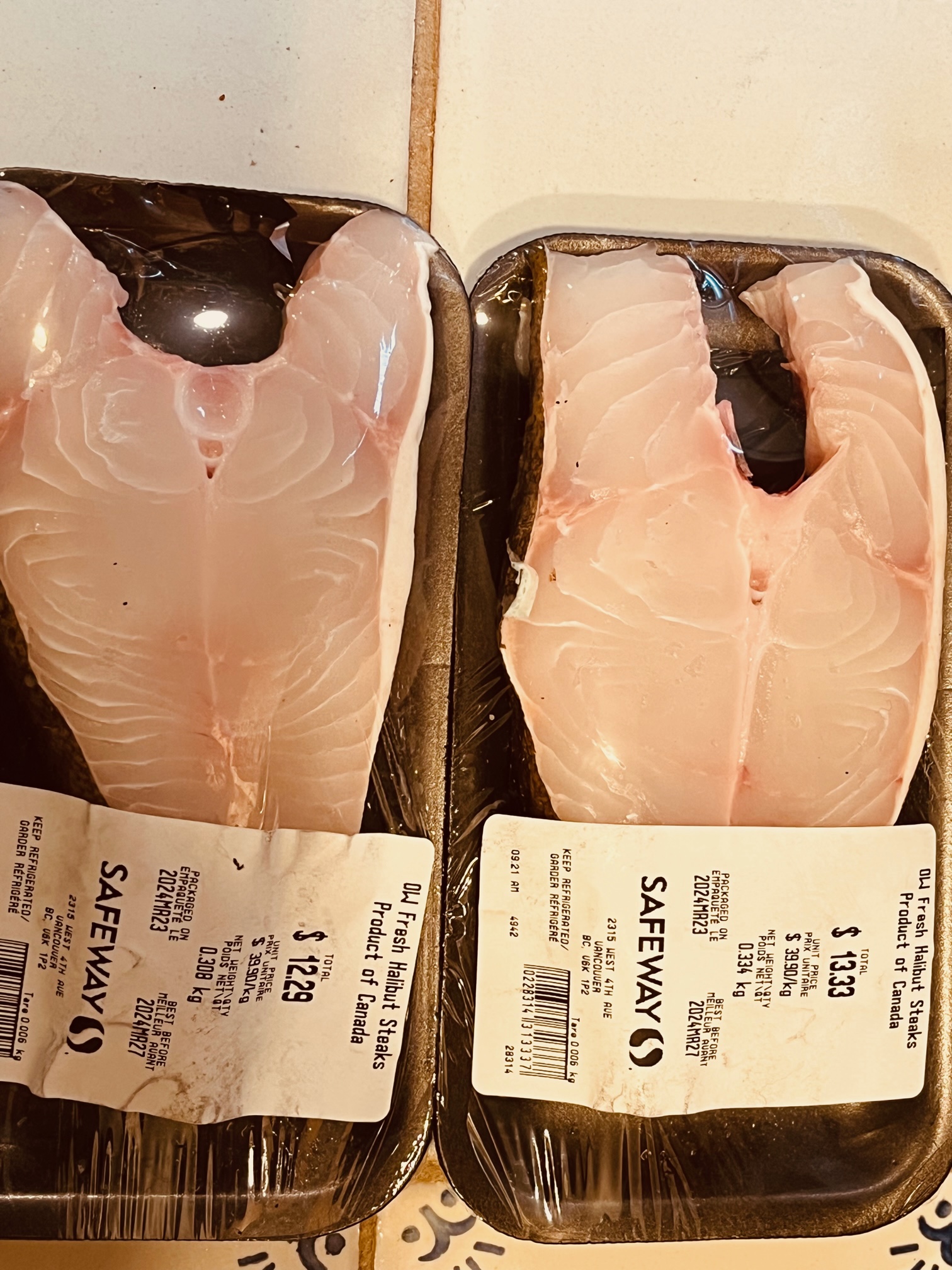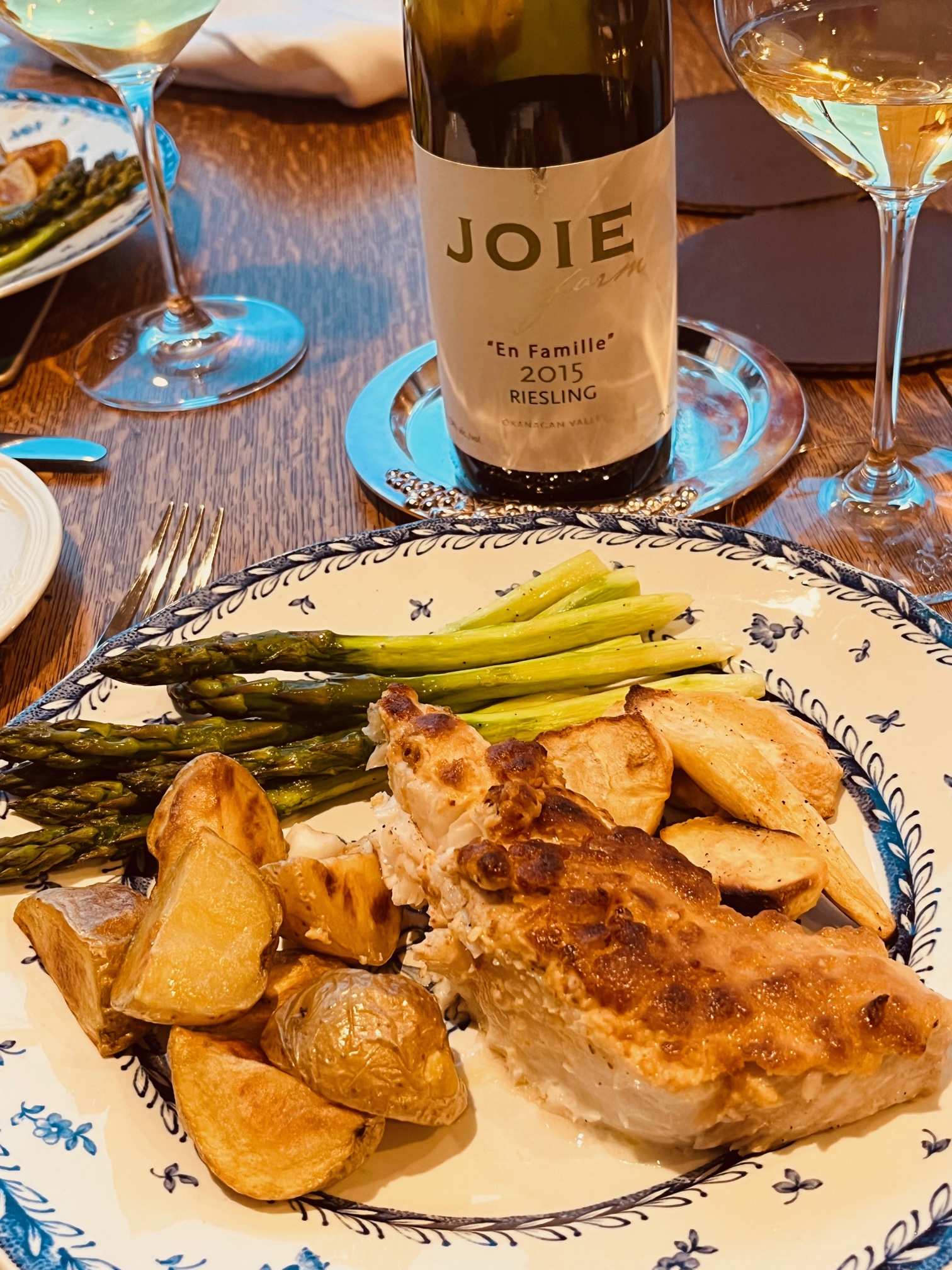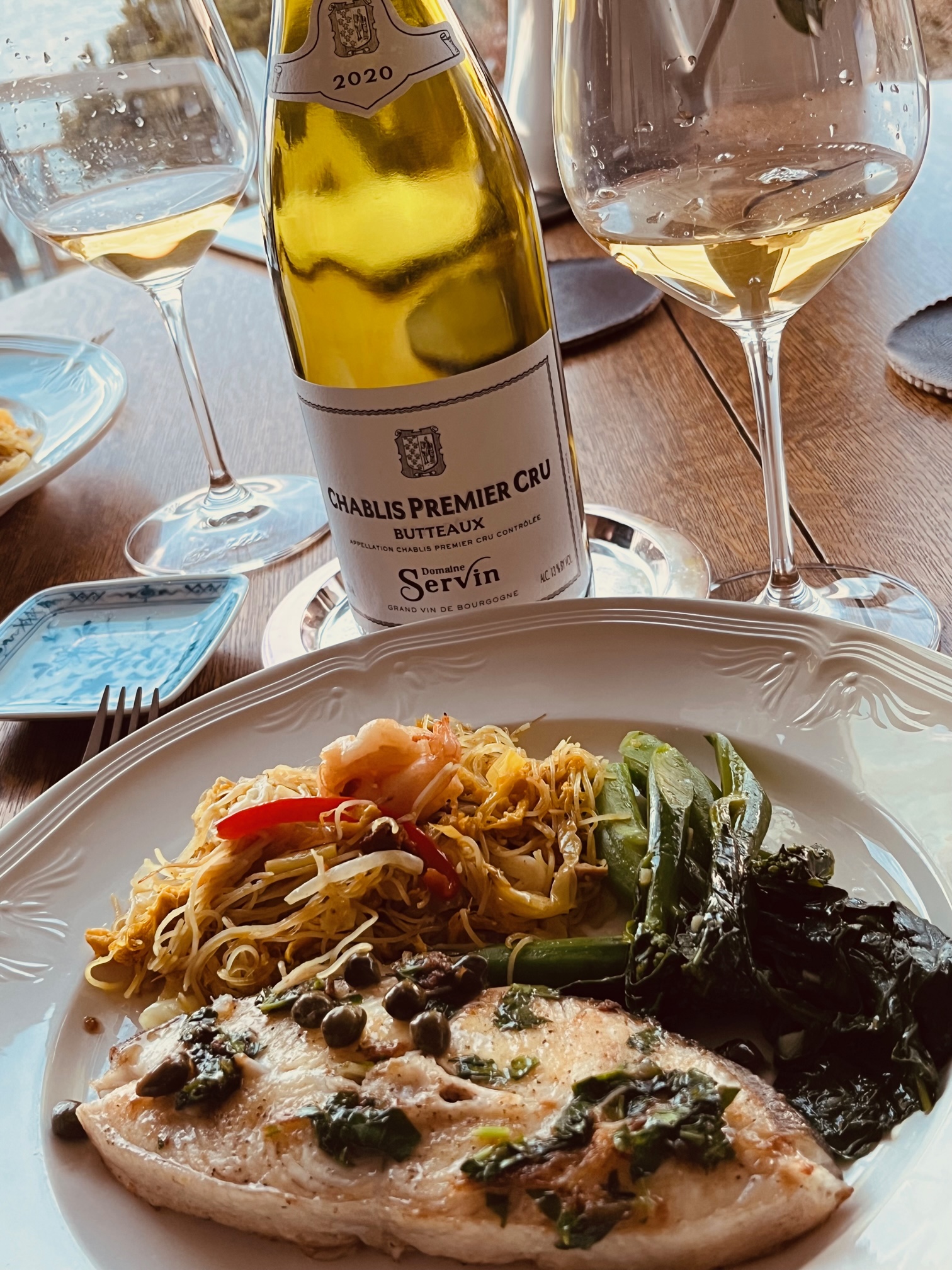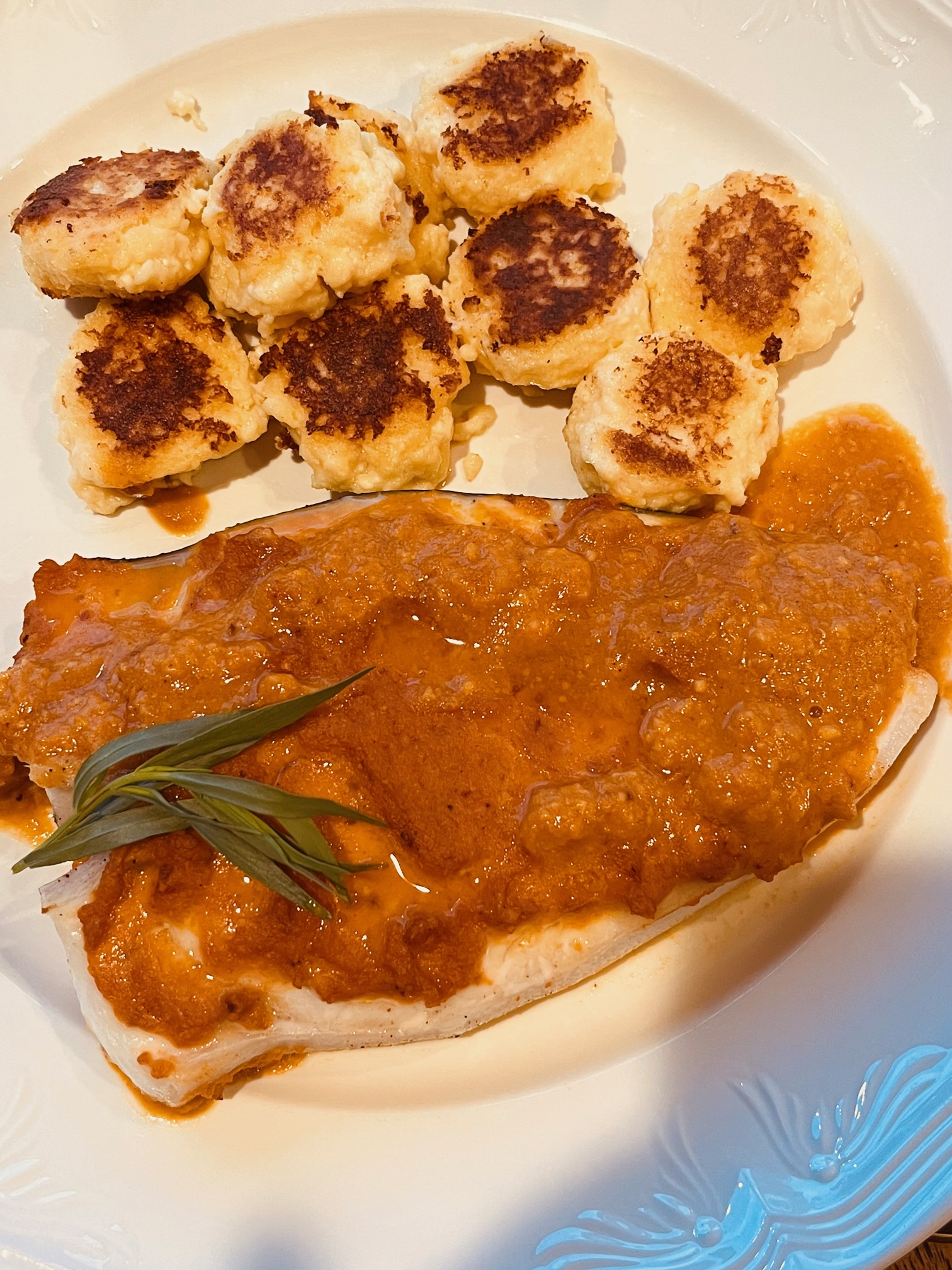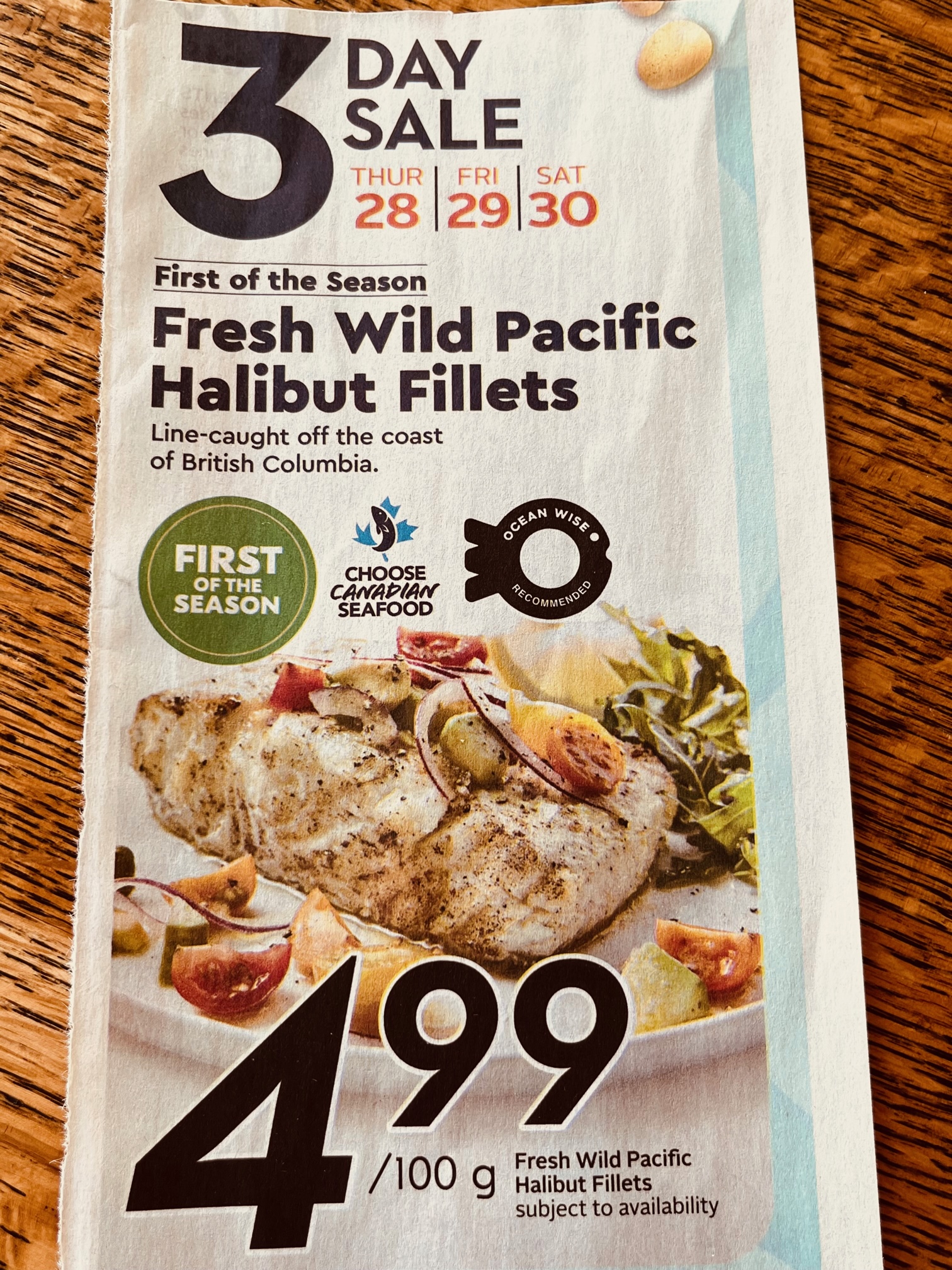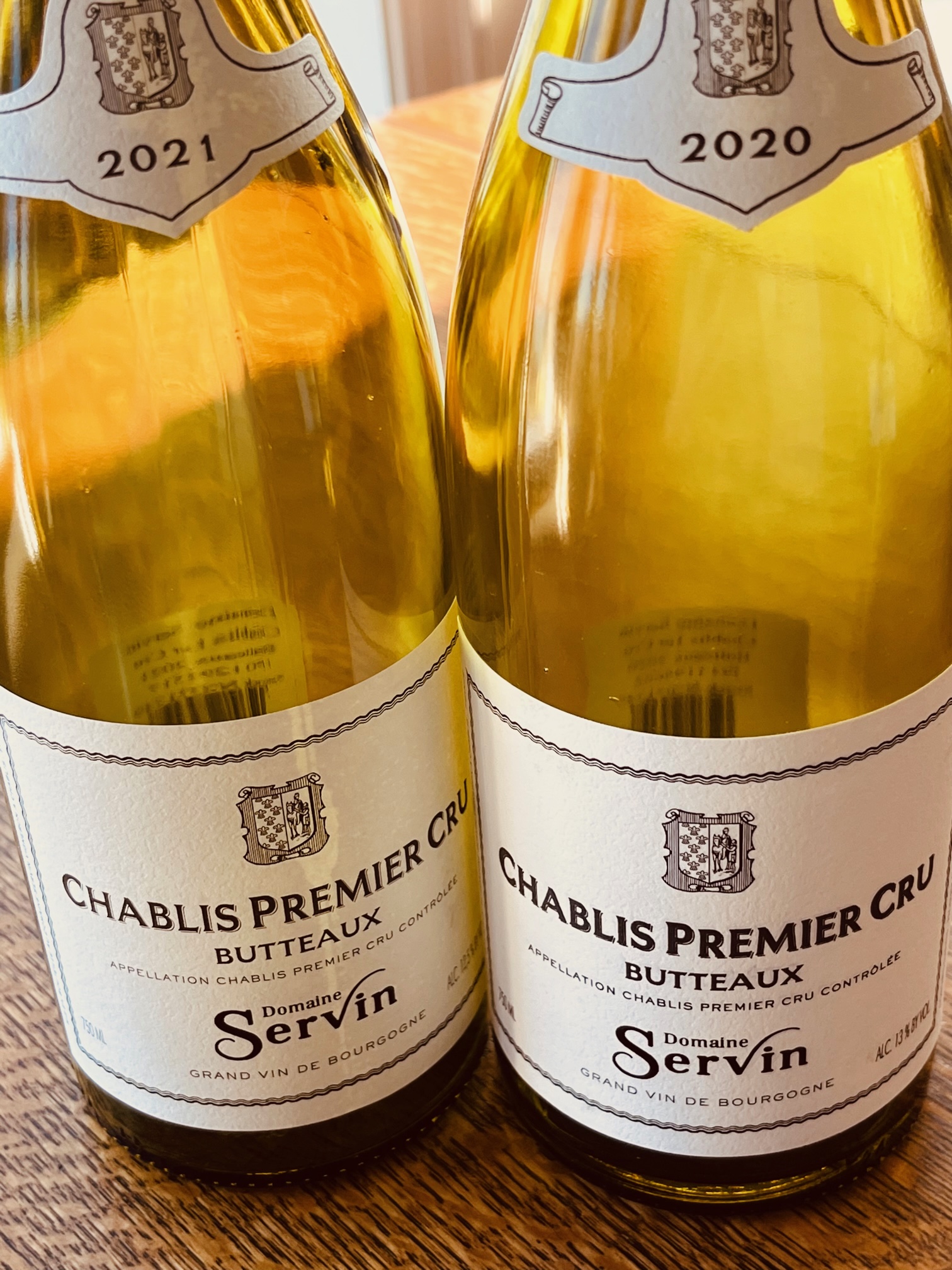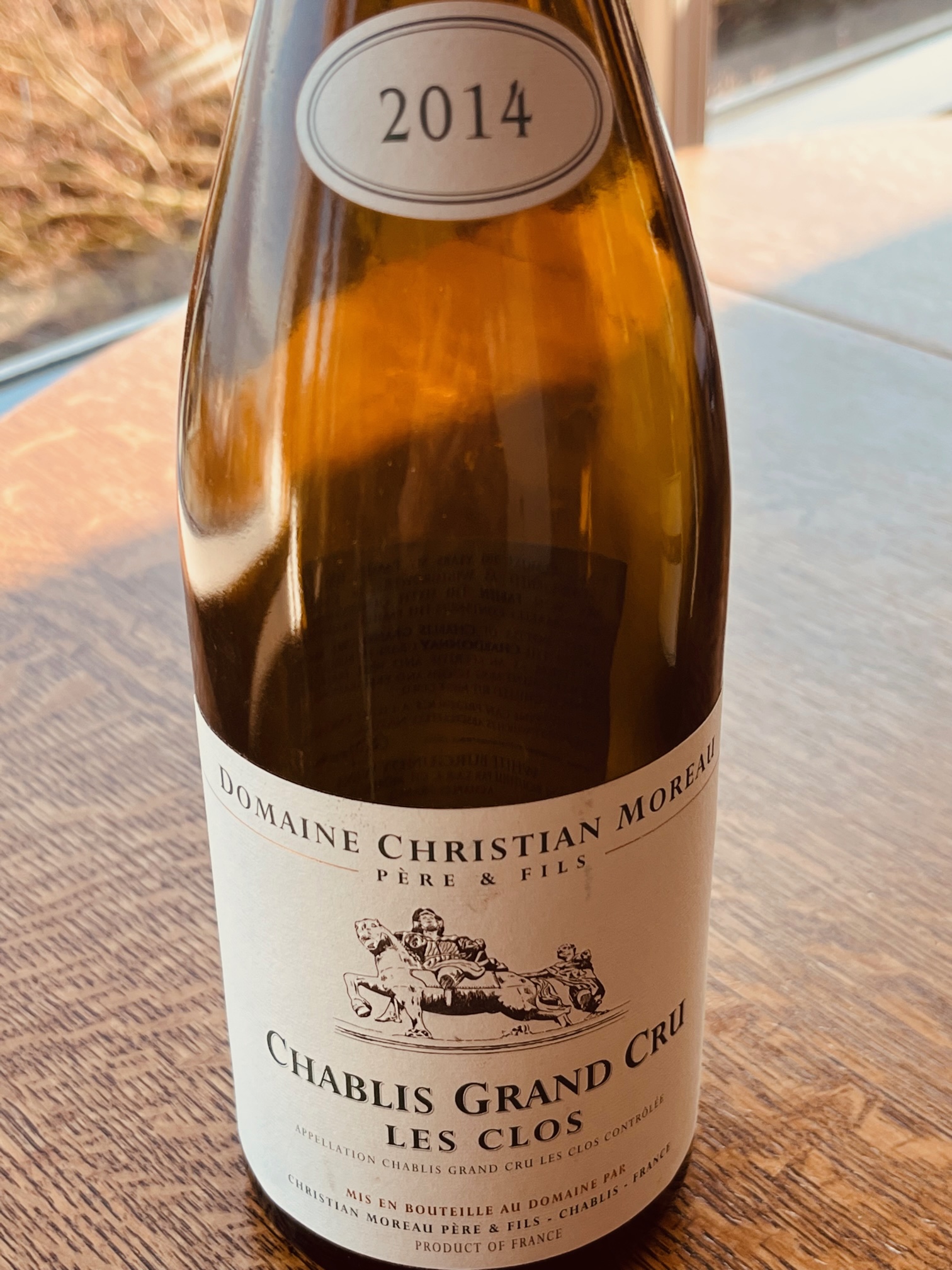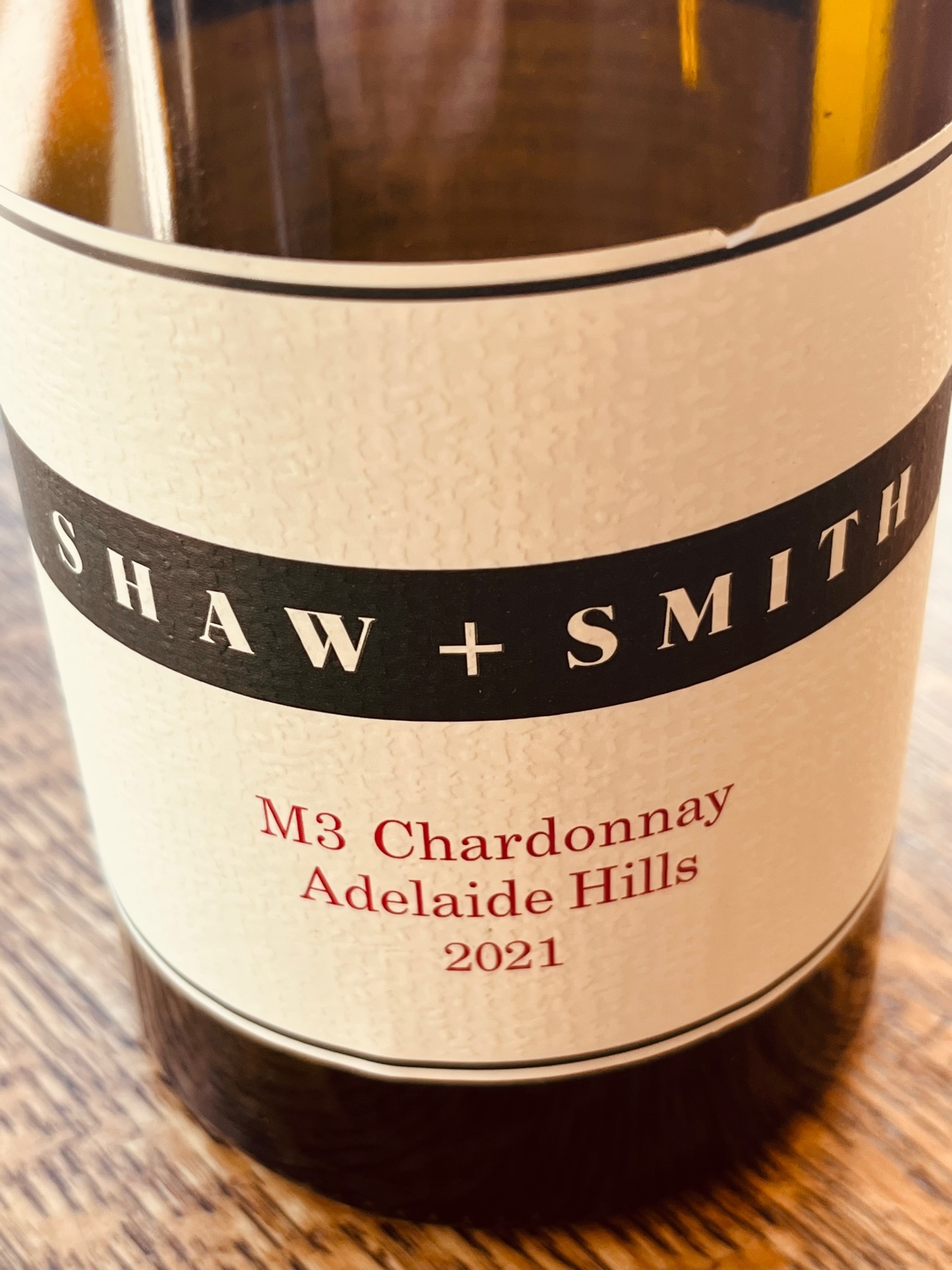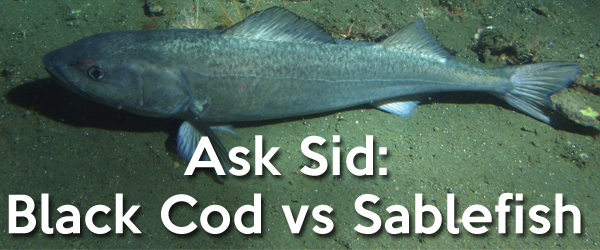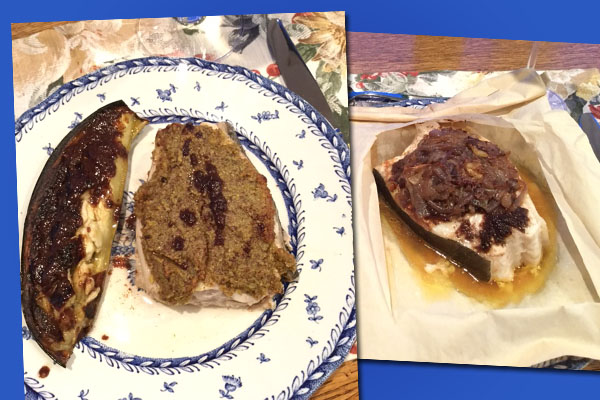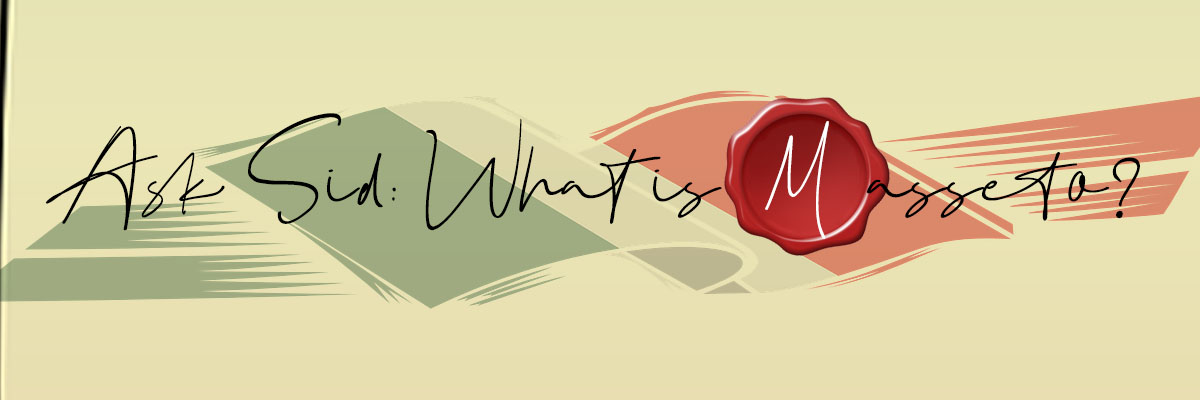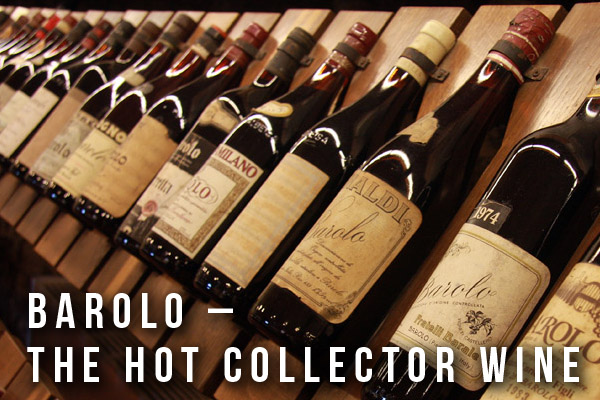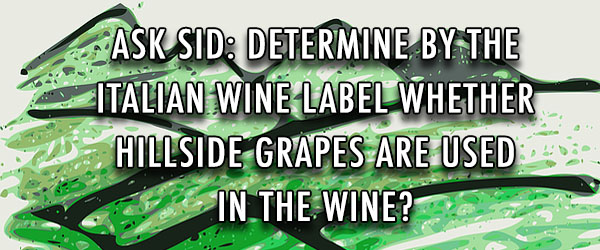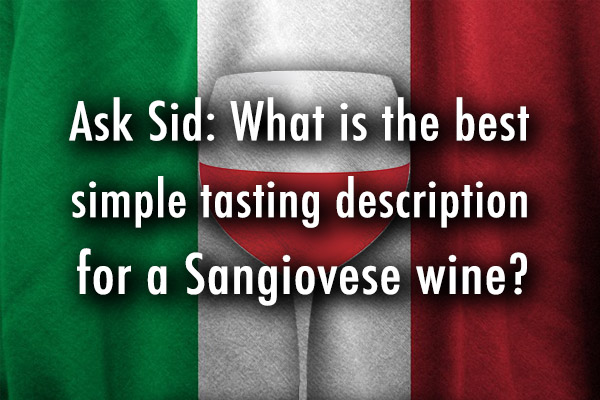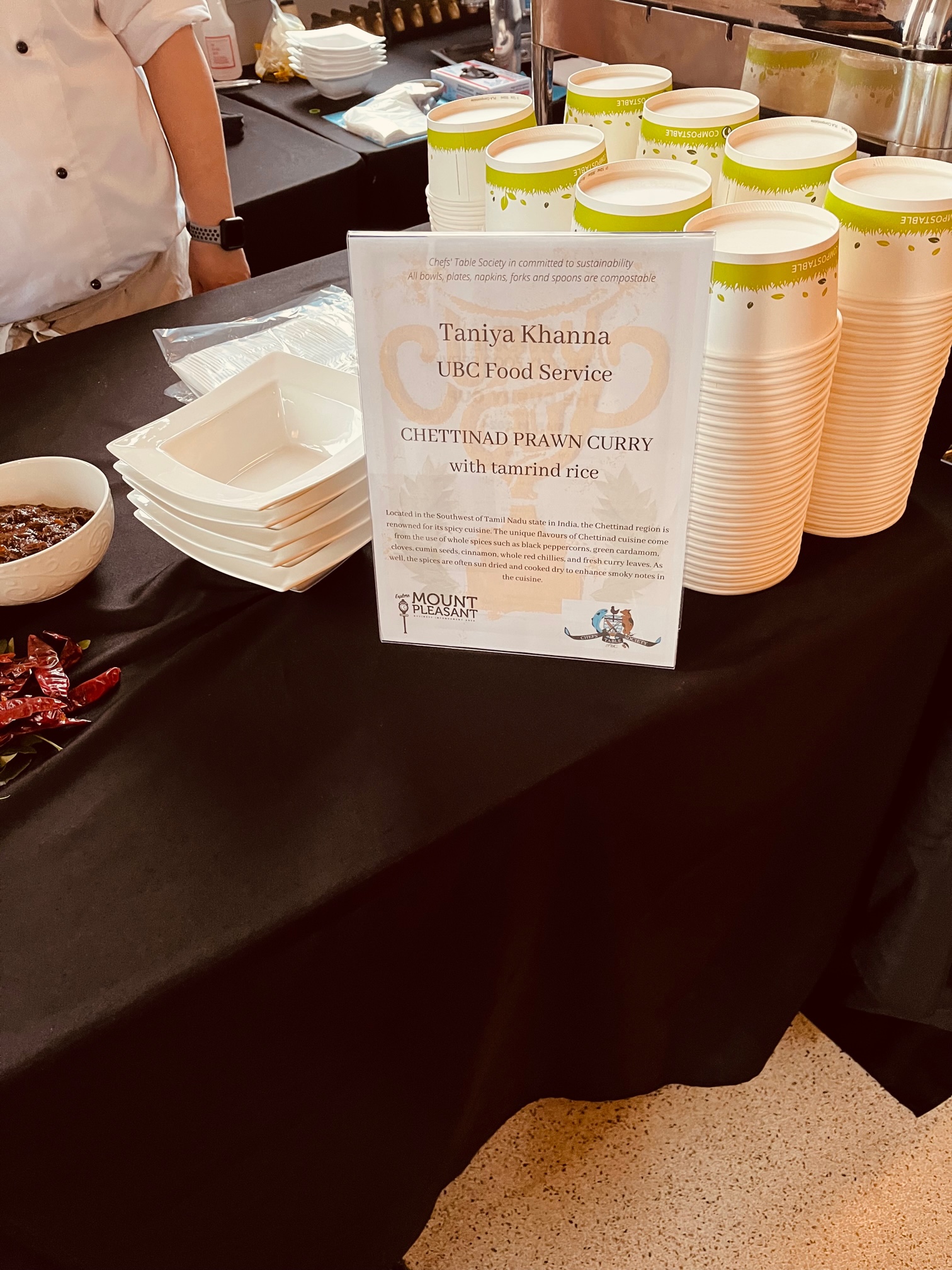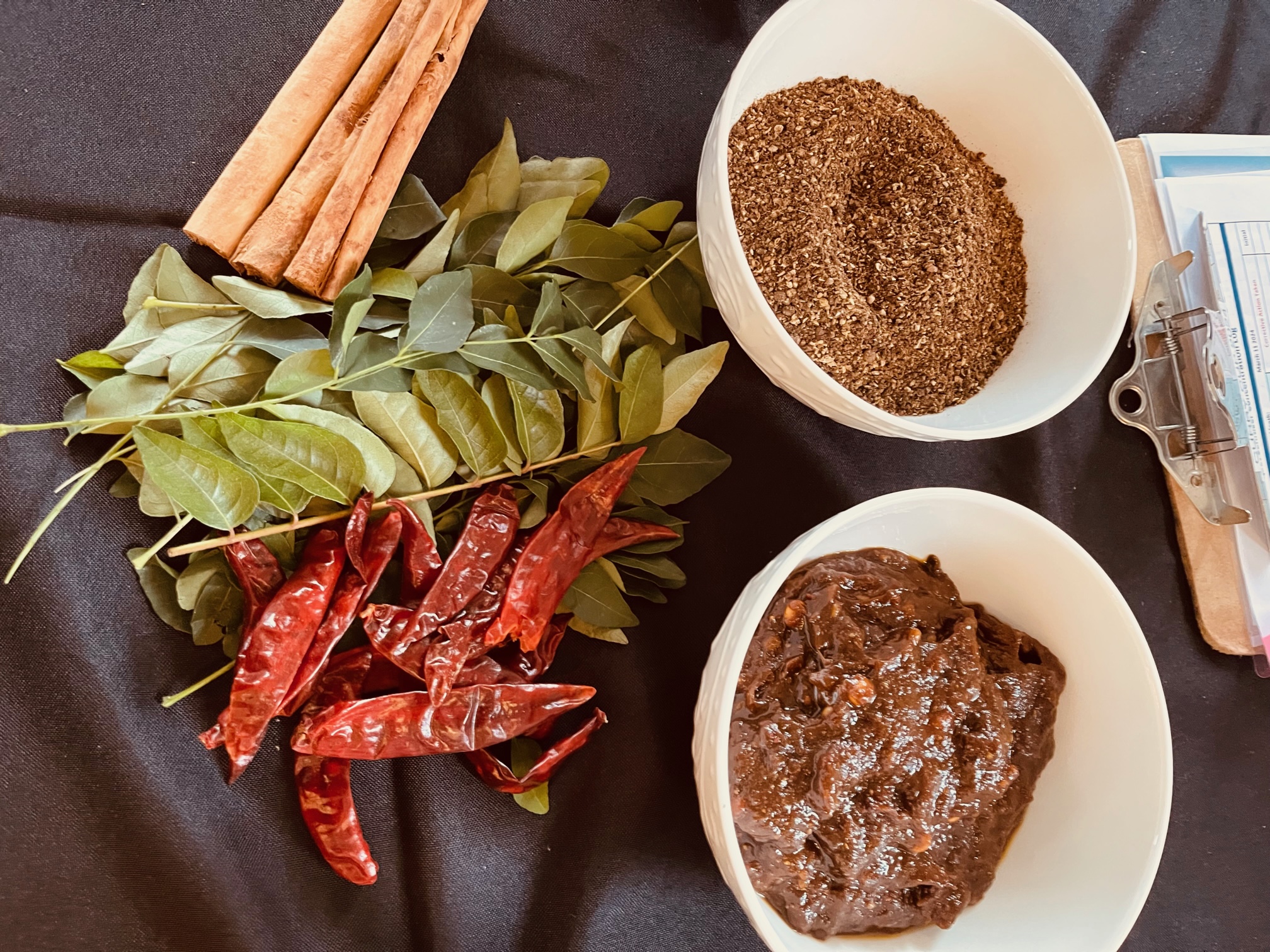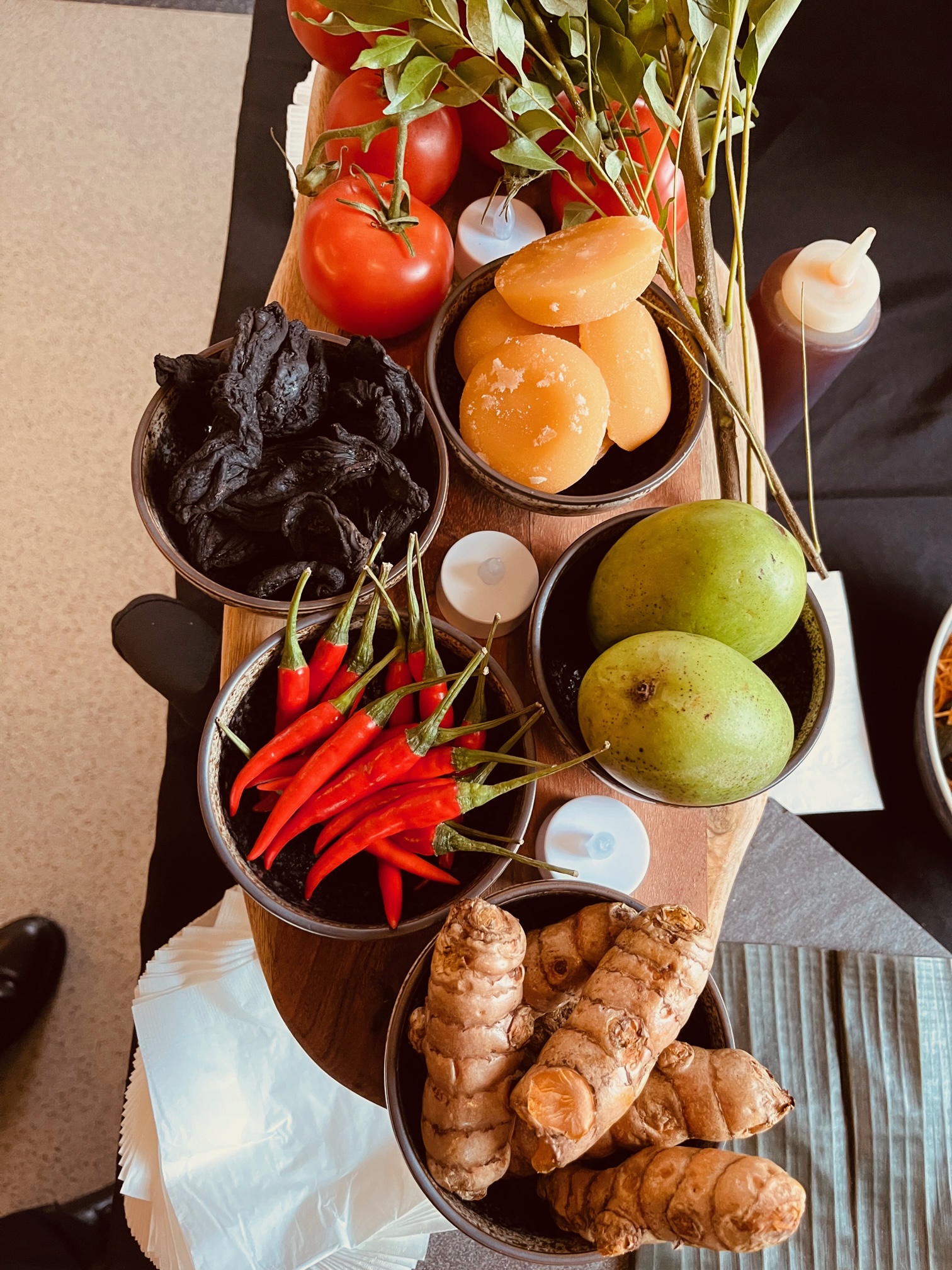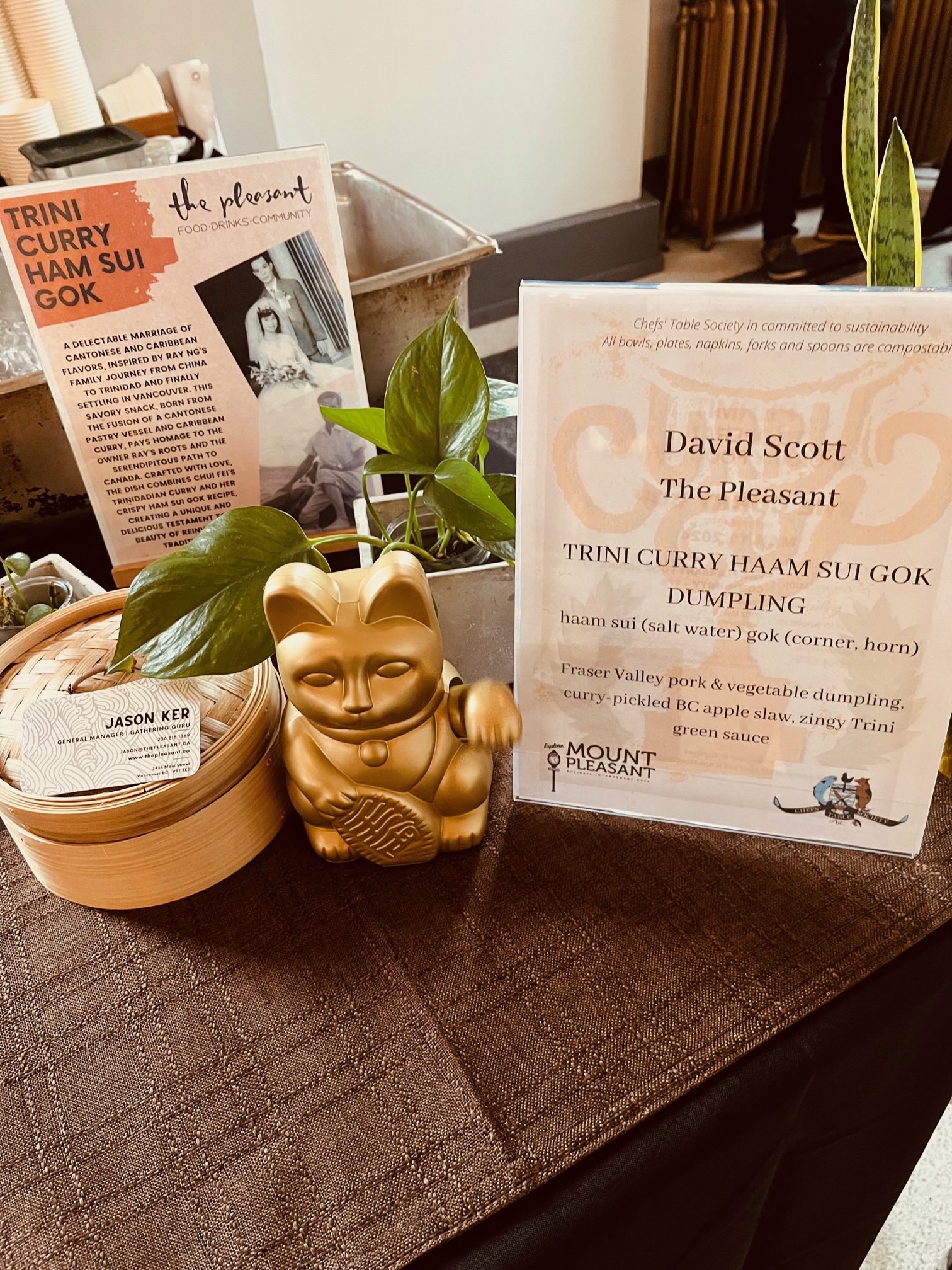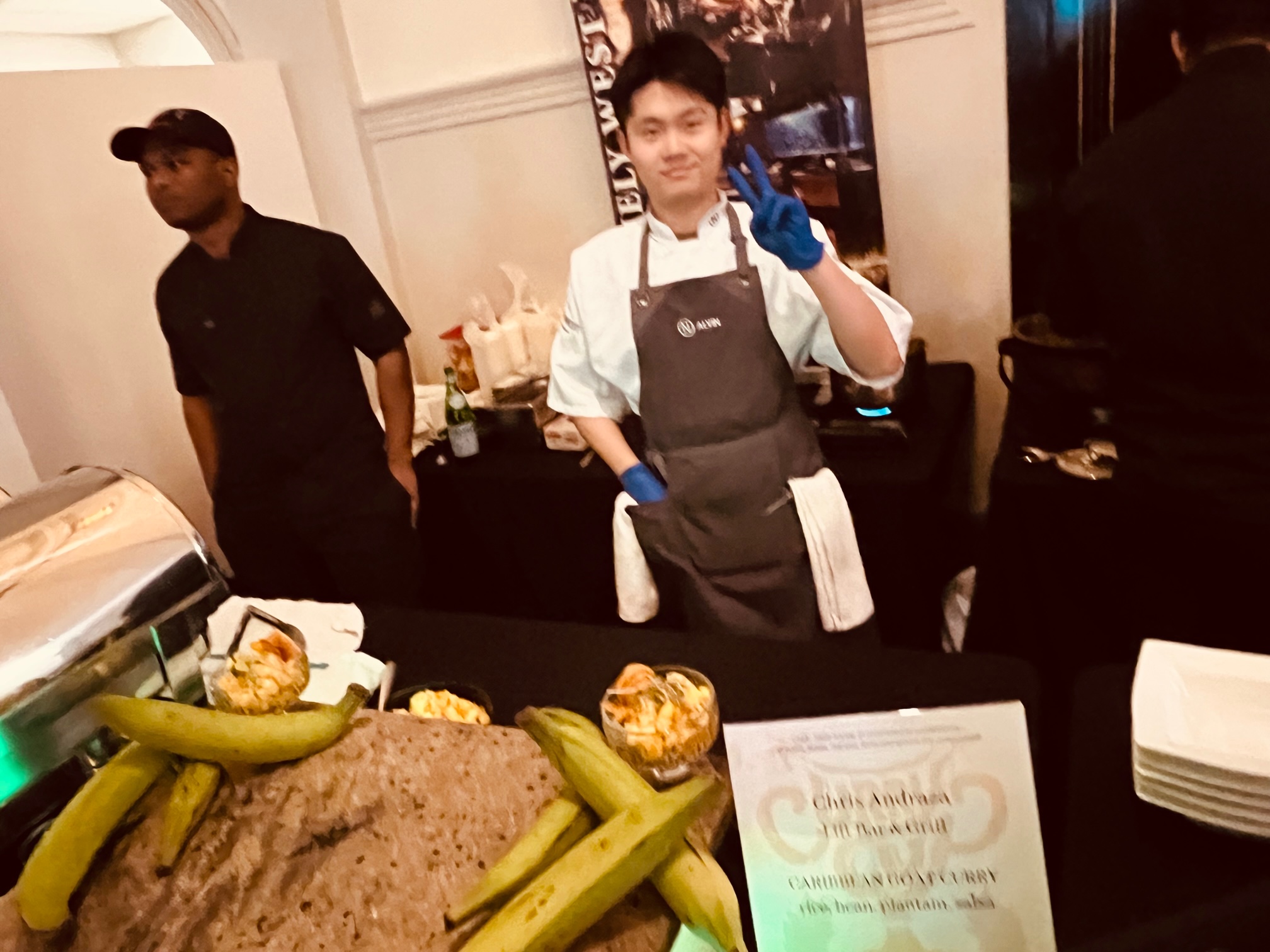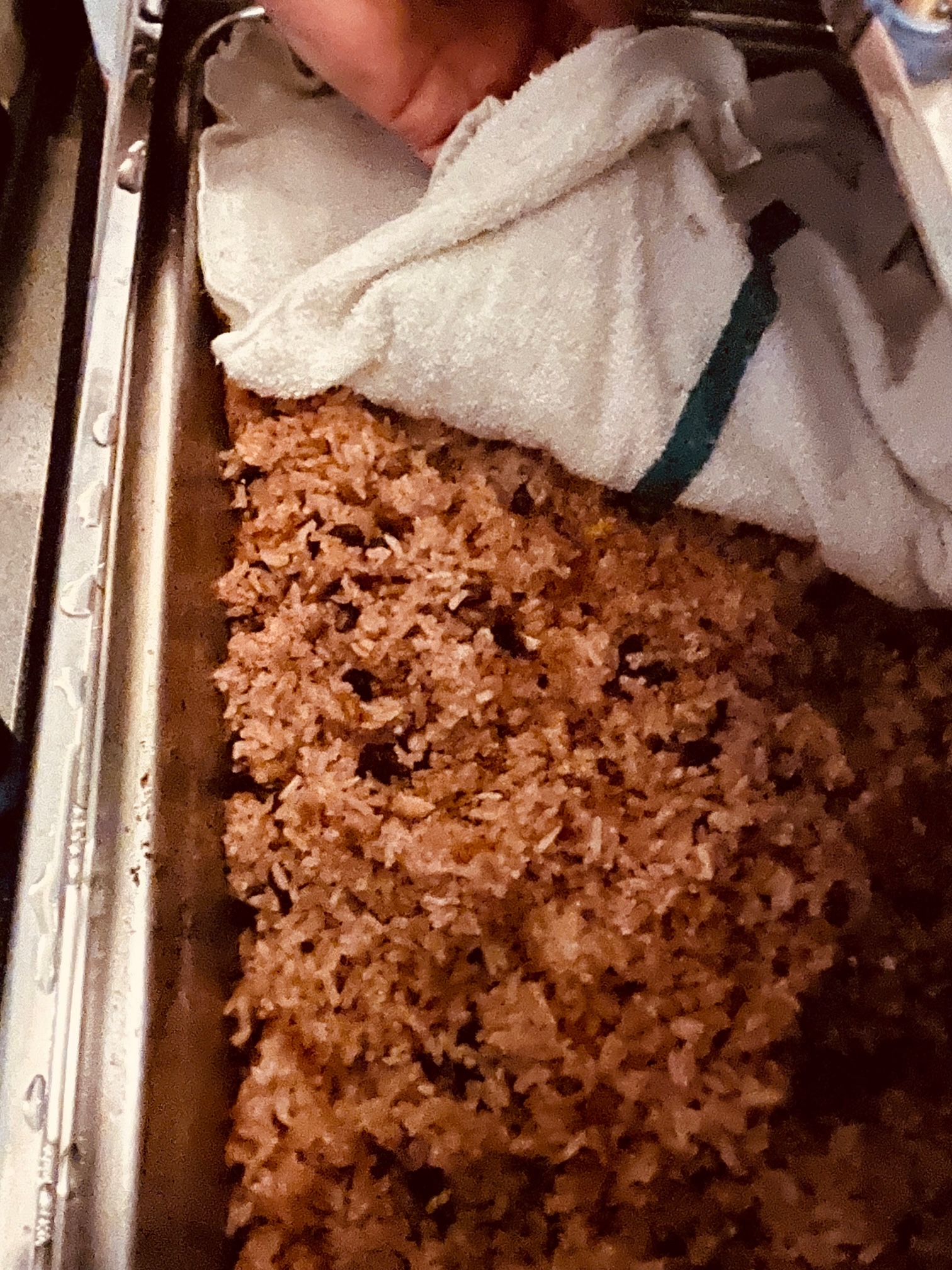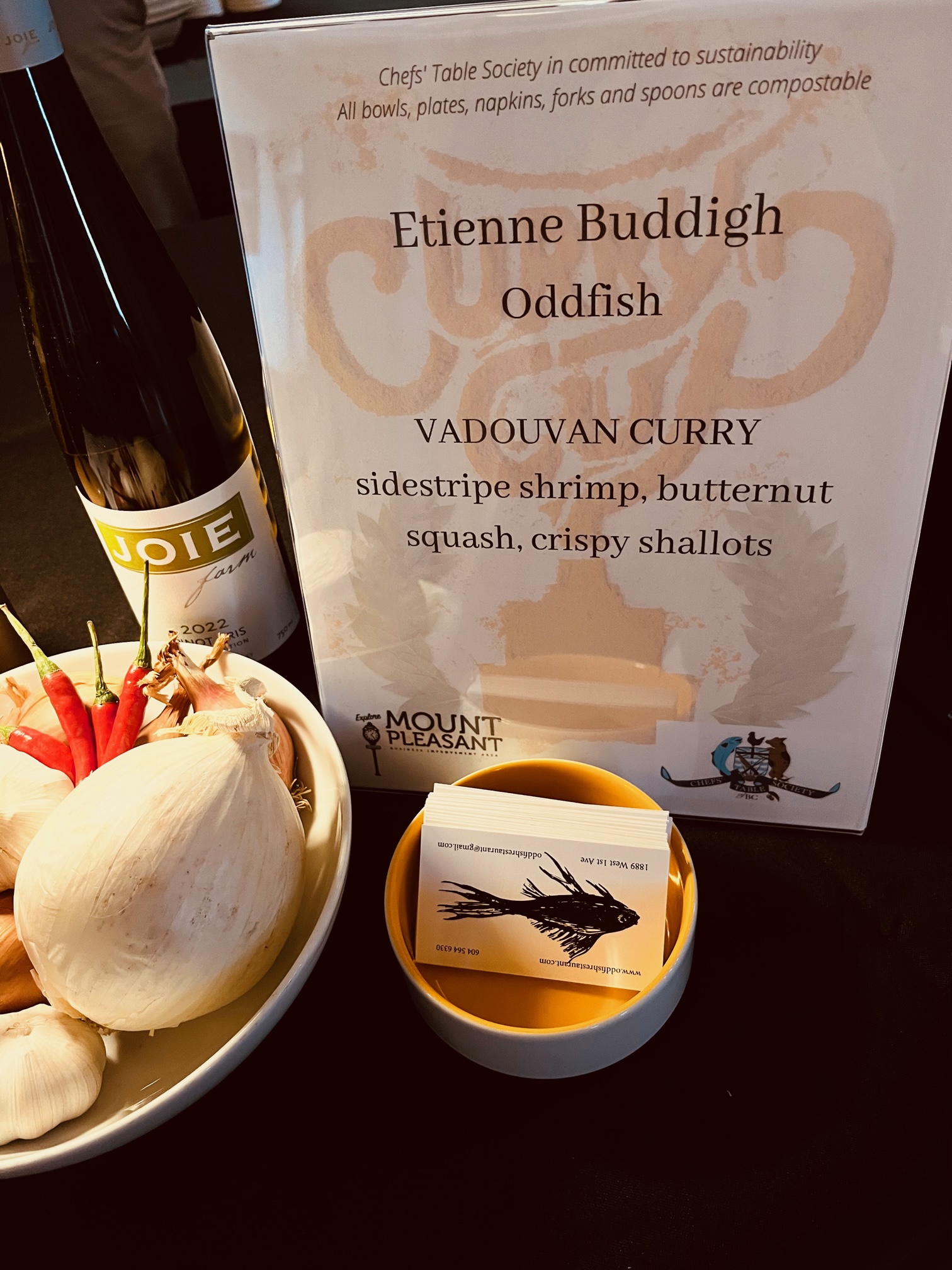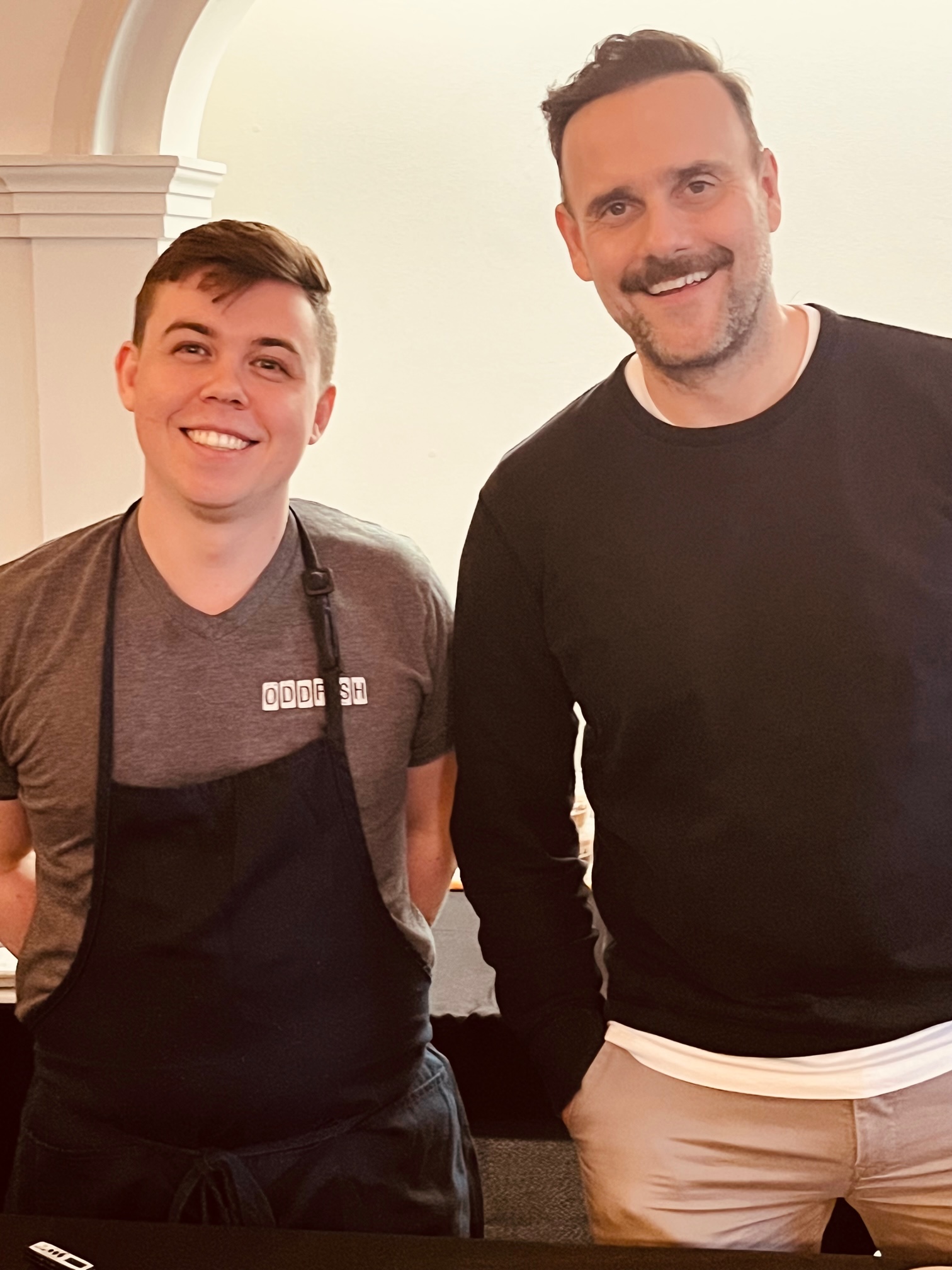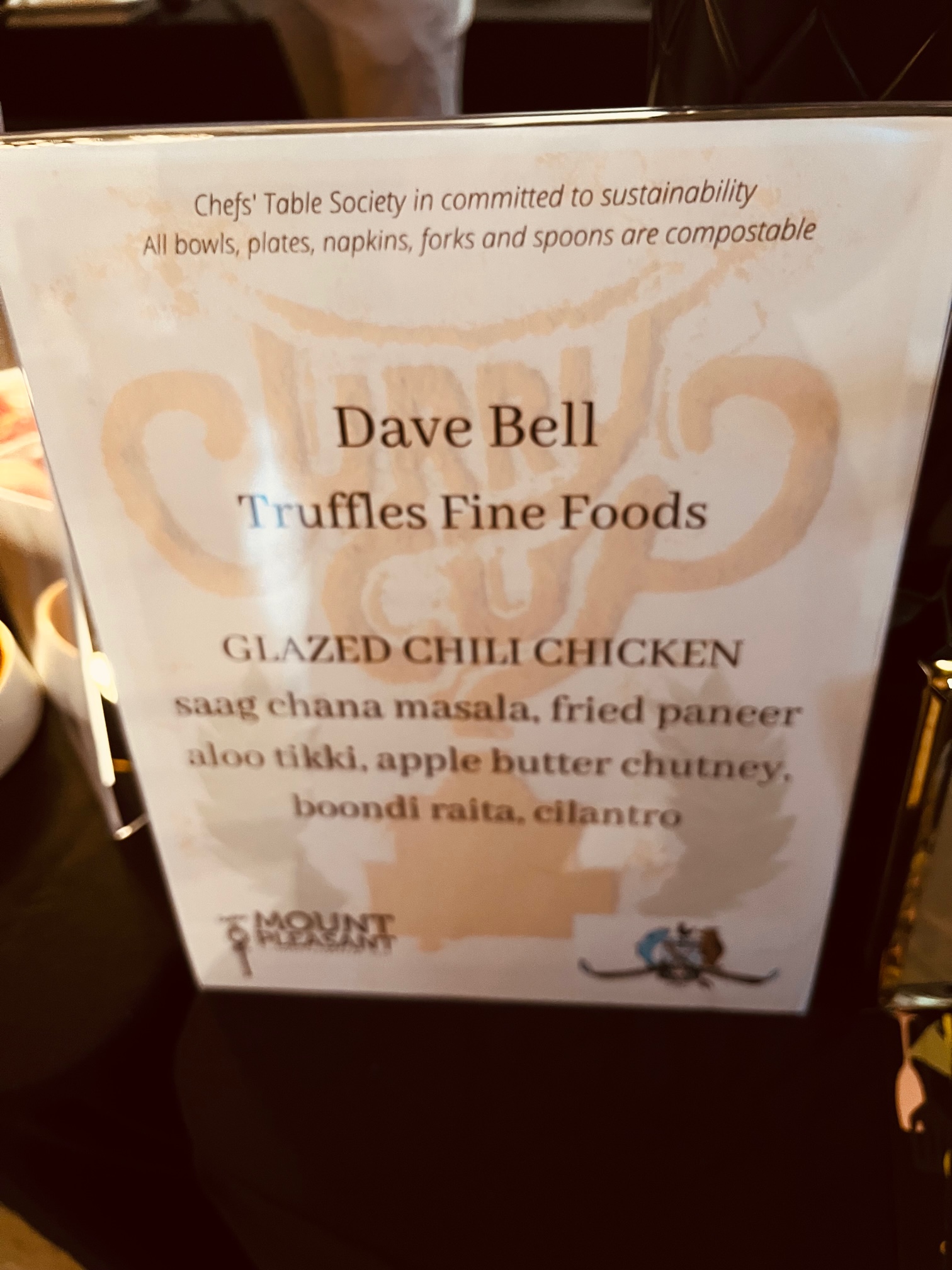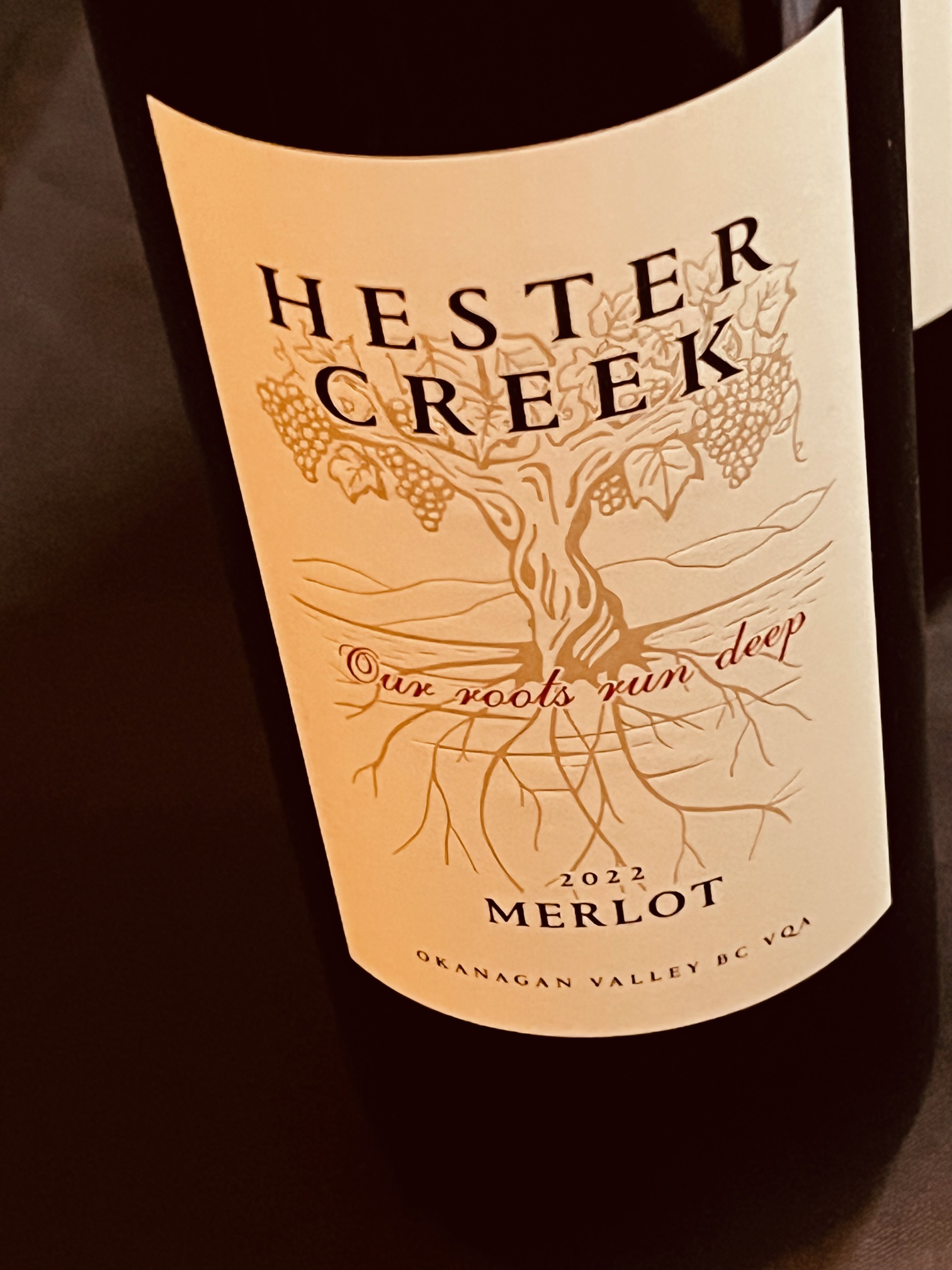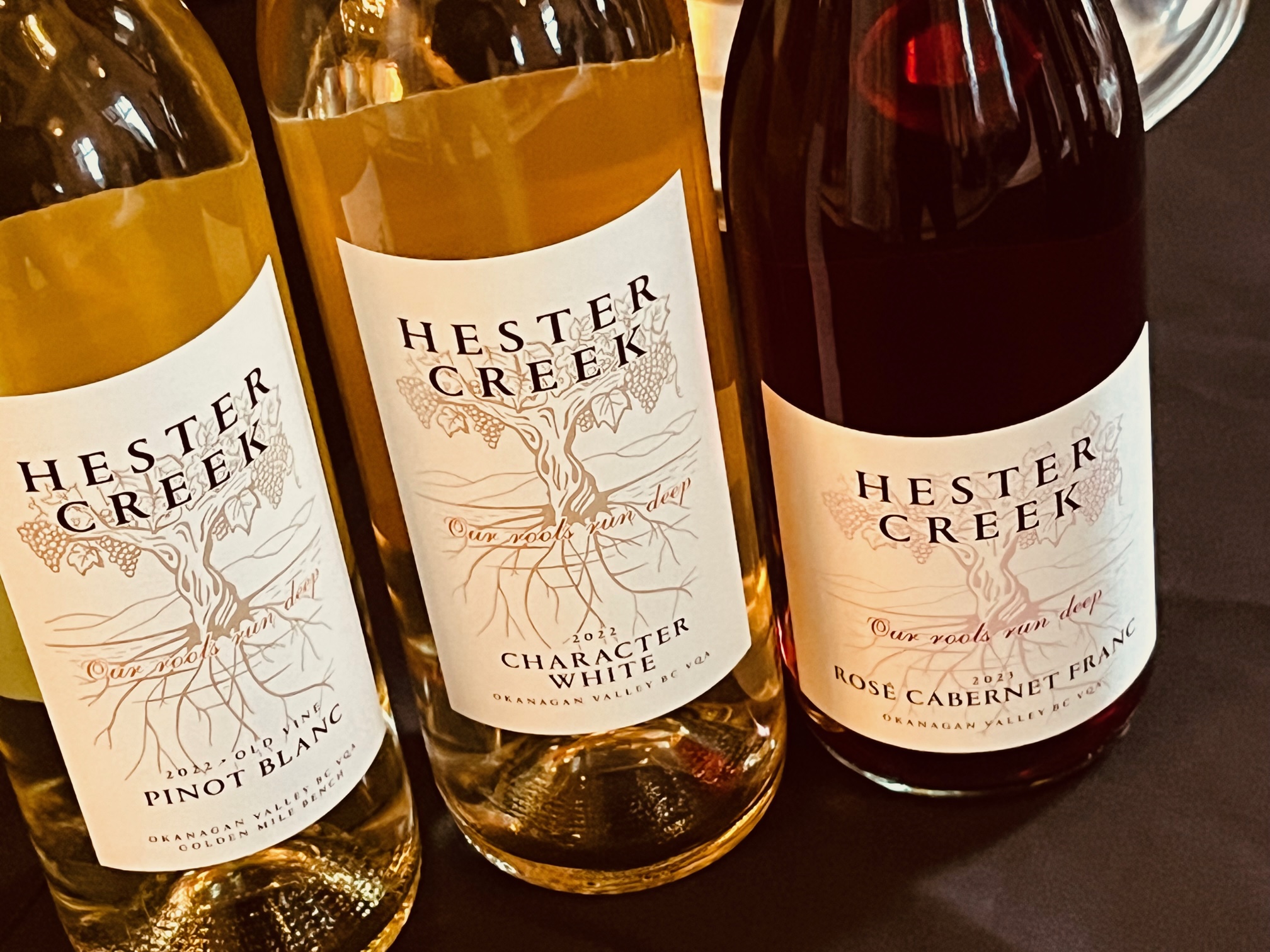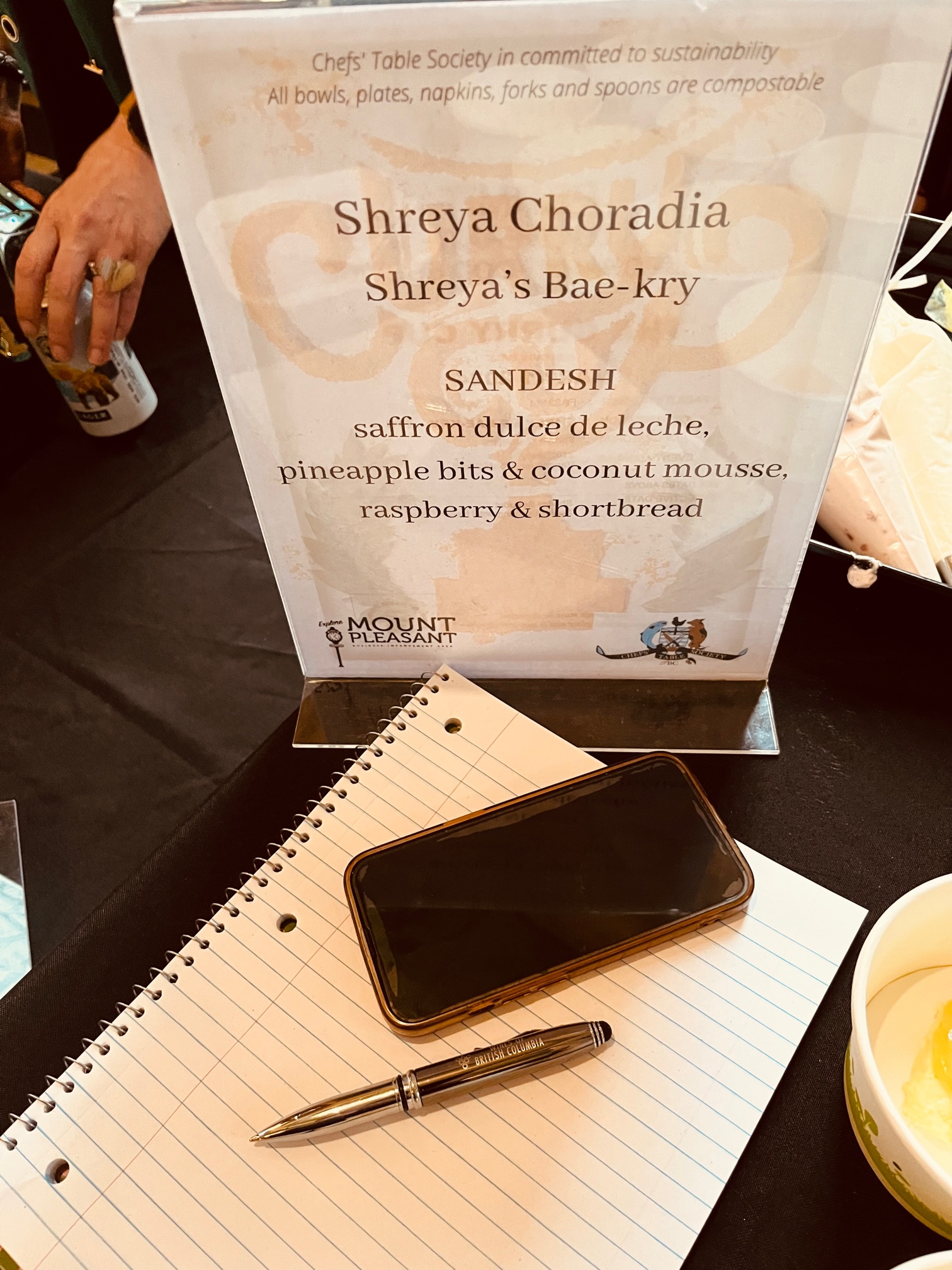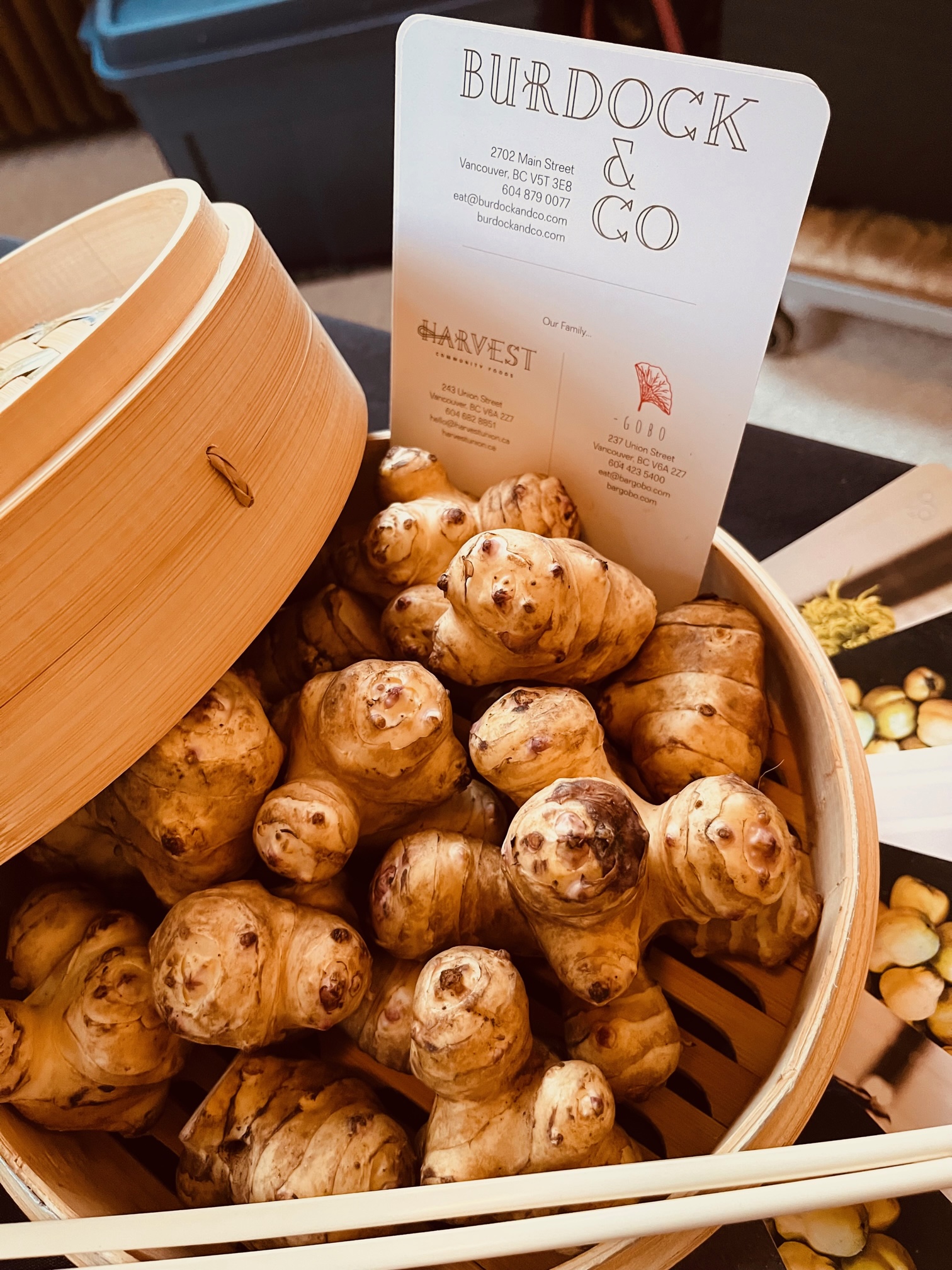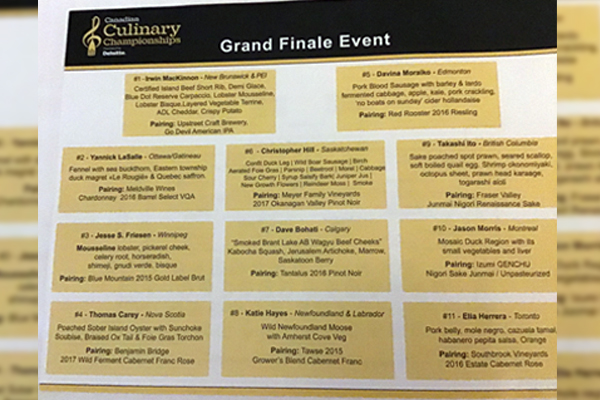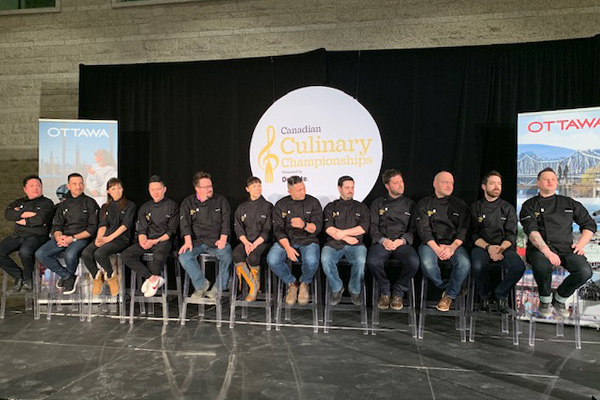
On April 2, 2024 the Vancouver Group of Eight held their Event #120 at Blue Water Cafe focusing on older wines from St. Emilion. The aperitif was a fresh vibrant most elegant great balanced vintage 2002 BILLECART-SALMON CUVEE NICOLAS FRANCOIS BRUT blending 60% Pinot Noir & 40% Chardonnay partially 20% in oak with 10 years on the lees and only 4g/l dosage disgorged 04/2019. Still so young and wonderful paired with an artistic scallop & lobster gnocchi starter.
We enjoyed 10 different St. Emilion properties in two flights matched with two well-chosen game birds: a delicious grilled spatchcocked local quail and an exquisite pan-roasted Guinea fowl. The wines widely ranged in age from the youngest 2009 to the oldest 1962 – over 60 years old! Three wines were from 1990 and two from 2000. All had quite different grape blends that added to the individual stylings of each property. Overall the wines were quite diverse but generally showed that plummy full easier approachability of this esteemed Right Bank region. Educational overview.
2009 CANON-LA-GAFFELIERE: Underrated quality property on clay soil with limestone & sand by Comtes von Neipperg from this hotter vintage. This has the darkest deepest look of the First Flight. Shows intense ripe plummy fruit with softer but delicious true impressive flavours. Very St. Emilion.
2005 MAGDELAINE: Jean-Pierre Moueix that is now a part of Belair-Monange. 95% Merlot & 5% Cab Franc from a classic year but even though quite full bodied, is surprisingly open round and forwardly drinking. Nevertheless it is well balanced and should continue to age well.
1996 VIEUX RIVALLON: Disappointing late substitute for early fruit bomb now developing better 2003 Pavie that was scheduled. This one was served blind showing easy drinking and simple mature fruit. However, it was light, and a bit short as a lower rated Grand Cru being outclassed in this stellar Grand Cru Classe line-up.
2000 BELAIR: Dubois-Challon by traditionalist winemaker Pascal Delbeck is more severe in the grip and drier tannins. A bit dumb and reluctant at present. Rather hard. Questionable. Where is the 2000 fruit?
2000 BEAU-SEJOUR BECOT: Second darkest but best prime open lovely aromatics of First Flight. Robust blend of 70/24/6 Merlot, Cab Franc, Cab Sauv. Still young with some tannins to resolve but well done.
1998 AUSONE: Vauthier family leads off as very dark and intense for what turned out to be a much better Second Flight. Small production (2000 cases?) of 50/50 Merlot/Cab Franc with prominent acidity in this excellent Right Bank vintage. Have experienced many mixed results from this property but much better tight cherry fruit showing than expected here. Should continue to develop well. No rush.
1990 FIGEAC: Thierry Manoncourt used 1/3 each M/CF/CS with 100% new oak harvested September 17 to October 6. Lighter look but typical notes of mint, tea, and herbs. Like the freshness but seems less ripe and firmer than expected. Prefer the older vintages like 1964 (or 1949) or newer exciting more current releases from Frederic Faye. May show better with another bottle or later.
1990 ANGELUS: Bouard De Laforest complex stunner of 60% Merlot & 40% Cab Franc. Darkest wine of this flight. Amazing explosive big impressive powerful fruit. Love the concentrated sweet long flavours with ripe tannins. Clearly Wine of the Night!
1990 BEAUSEJOUR DUFFAU-LAGARROSSE: 100 point Parker (in 2009) written up previously on this Blog here. Shows dried fruits, forest floor, and earthy mushrooms tonight with more of that admirable smooth opulence “port-like” in this bottle. Not near a 100 score for me but an excellent unique St. Emilion in 1990.
1962 L’ARROSEE: Old fav from Pierre Rodhain bought at BCLDB in March 1973 for $7.85. Exclusive from the Barriere family (with L’Eglise Clinet Pomerol) sold mainly to the Belgium market. Western Cotes property here 50% Merlot/30 Cab Sauv/20 Cab Franc almost more Graves/Margaux in style. Purchased in 2013 by Domaine Clarence Dillon (Prince Robert of Luxembourg was most impressed with L’Arrosee 1961) who earlier in May 2011 had bought Tertre Daugay and merged both properties into now Quintus. The 1962 was a special old treat with still some red colour left plus open complex tertiary bouquet and superb delicacy. A treasure indeed.
We finished up with a lovely galette dessert matched with a lighter forwardly 1997 CHATEAU GUIRAUD SAUTERNES.
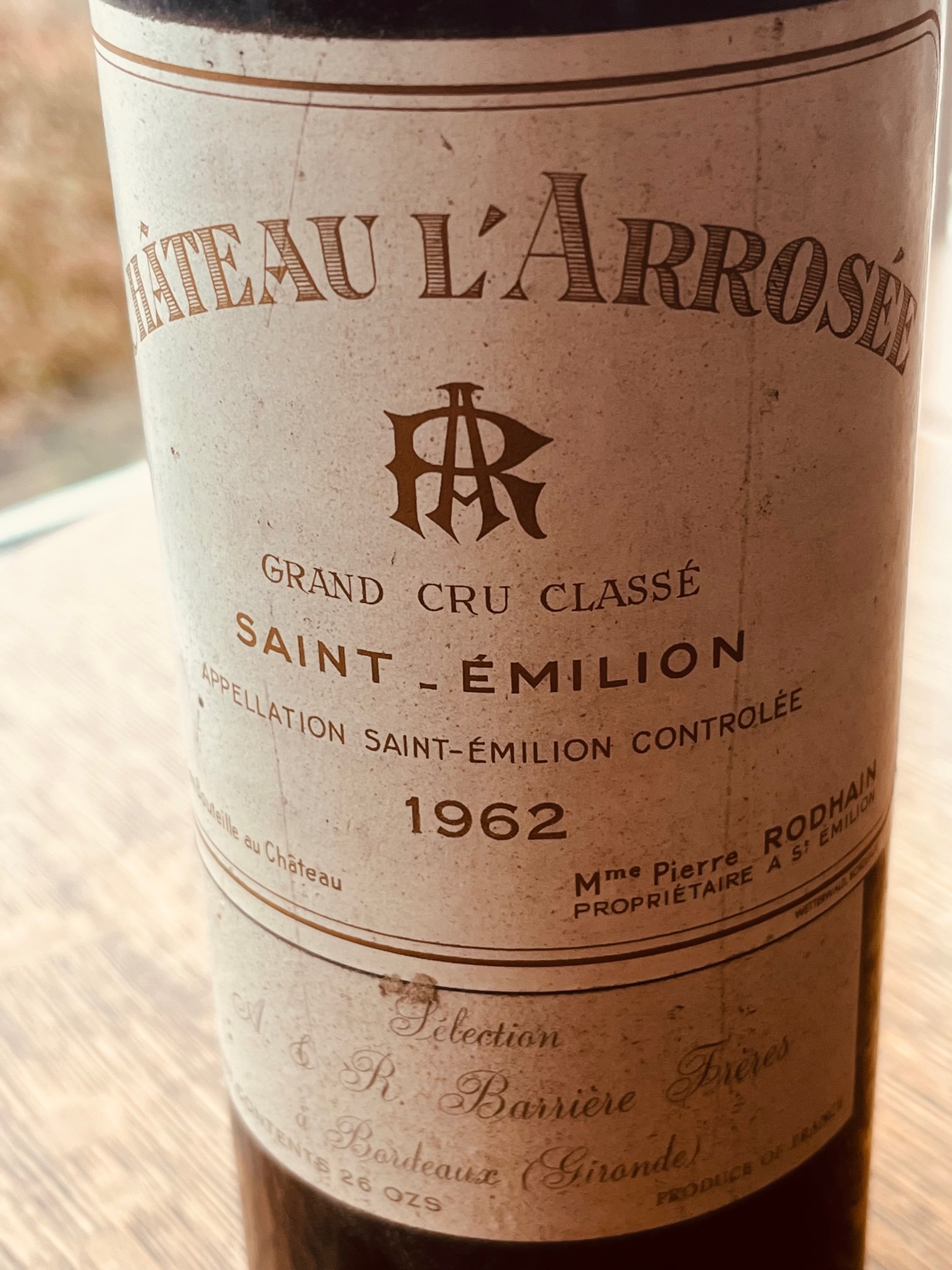
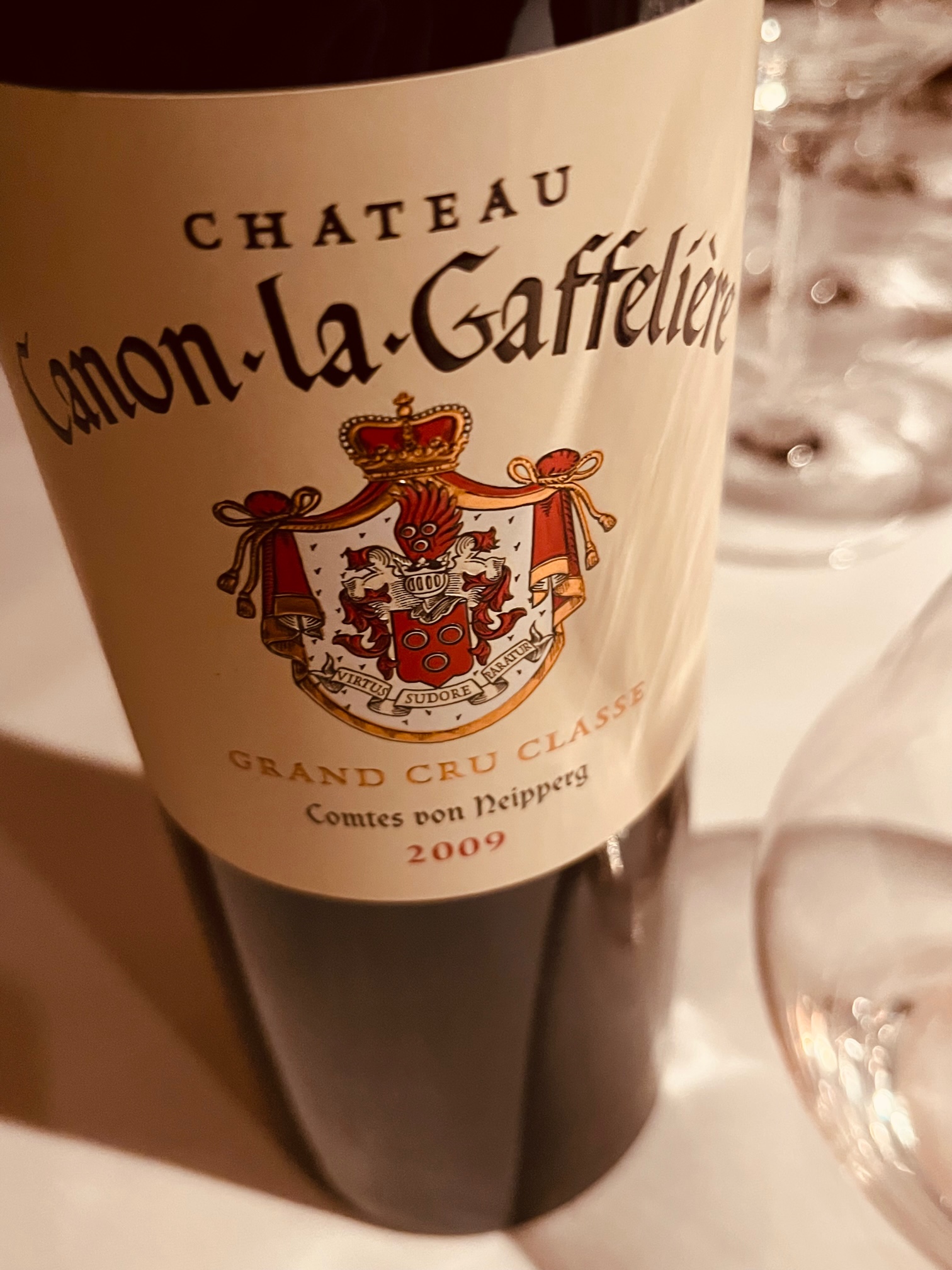

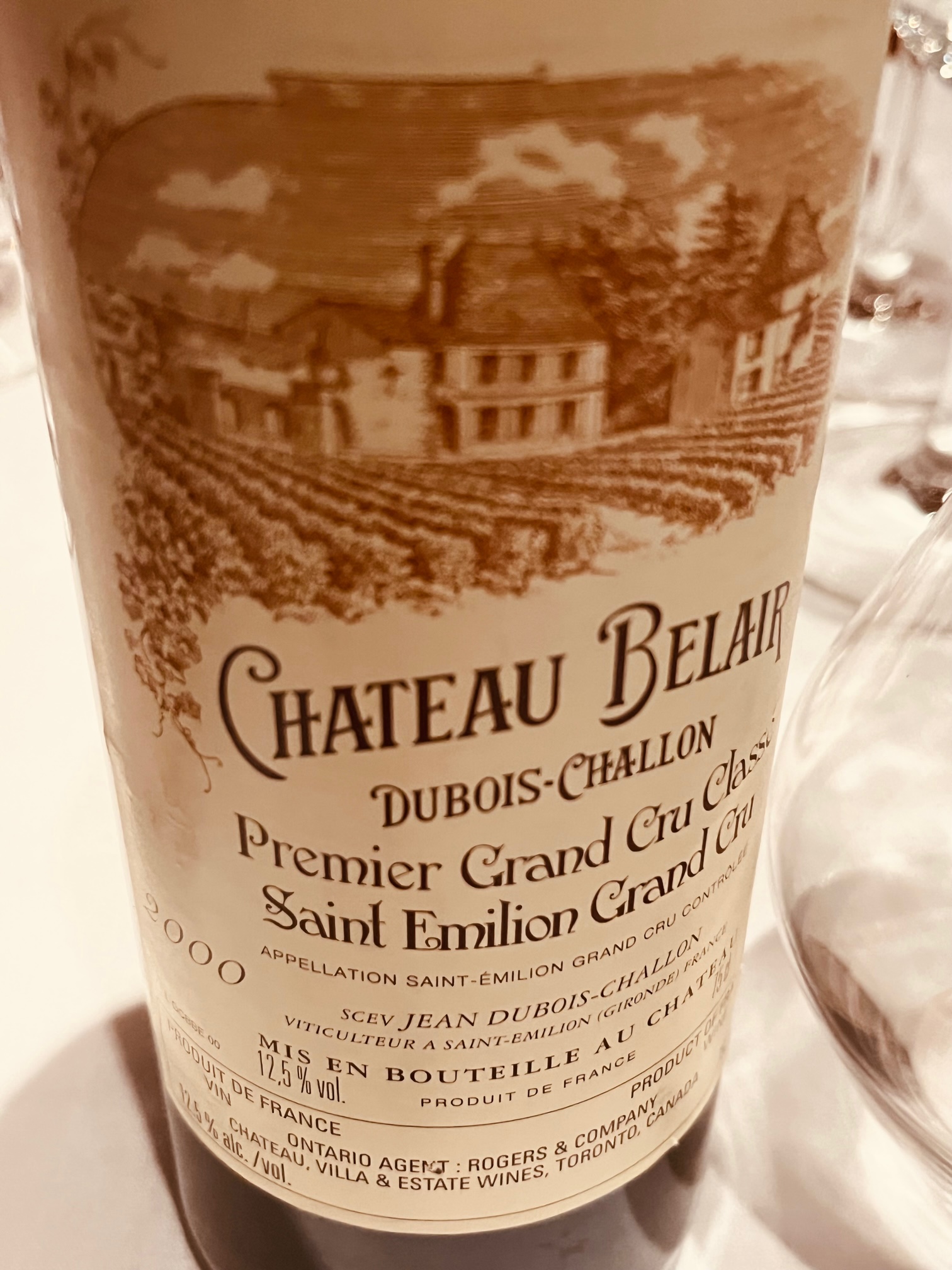
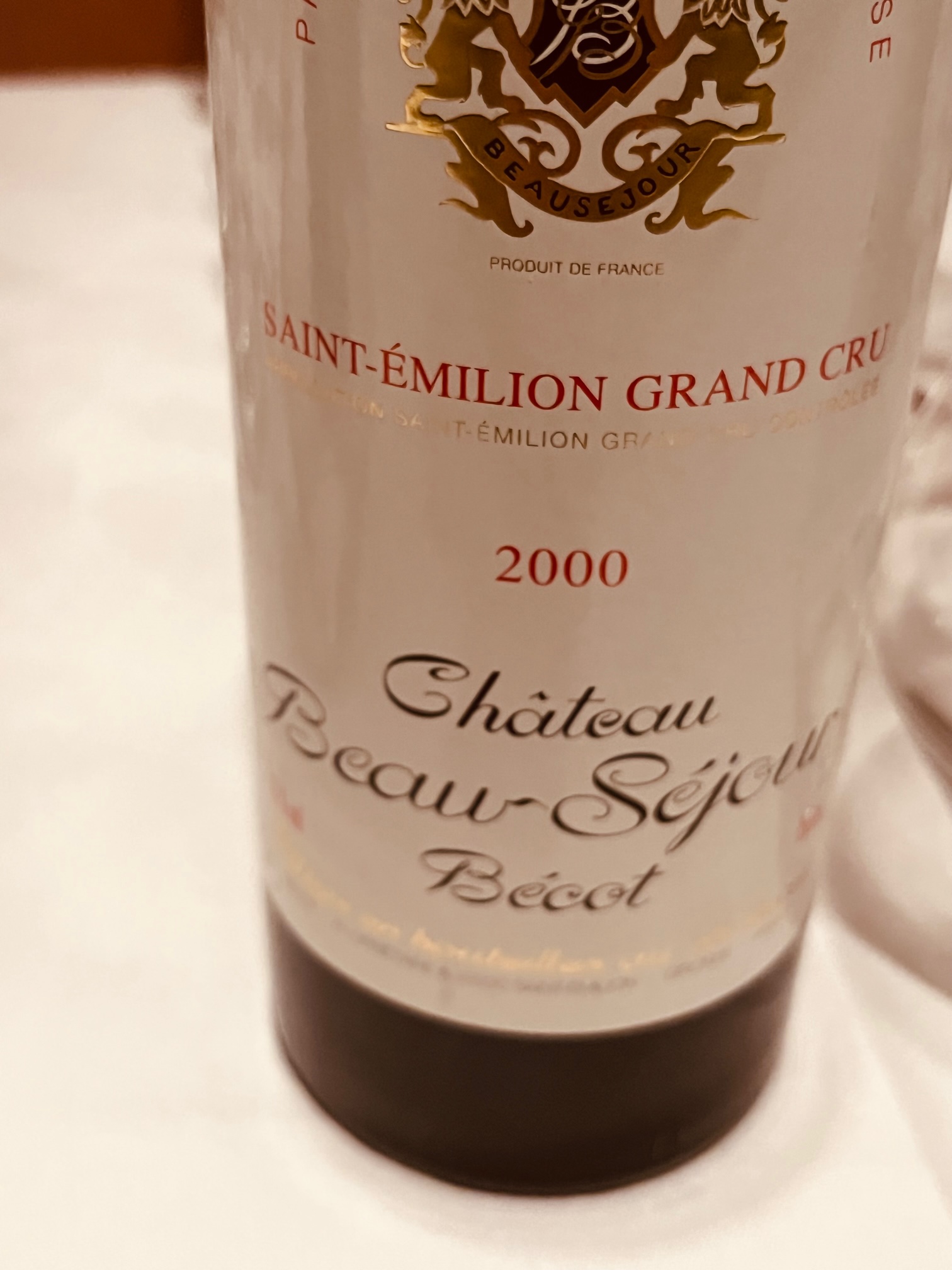
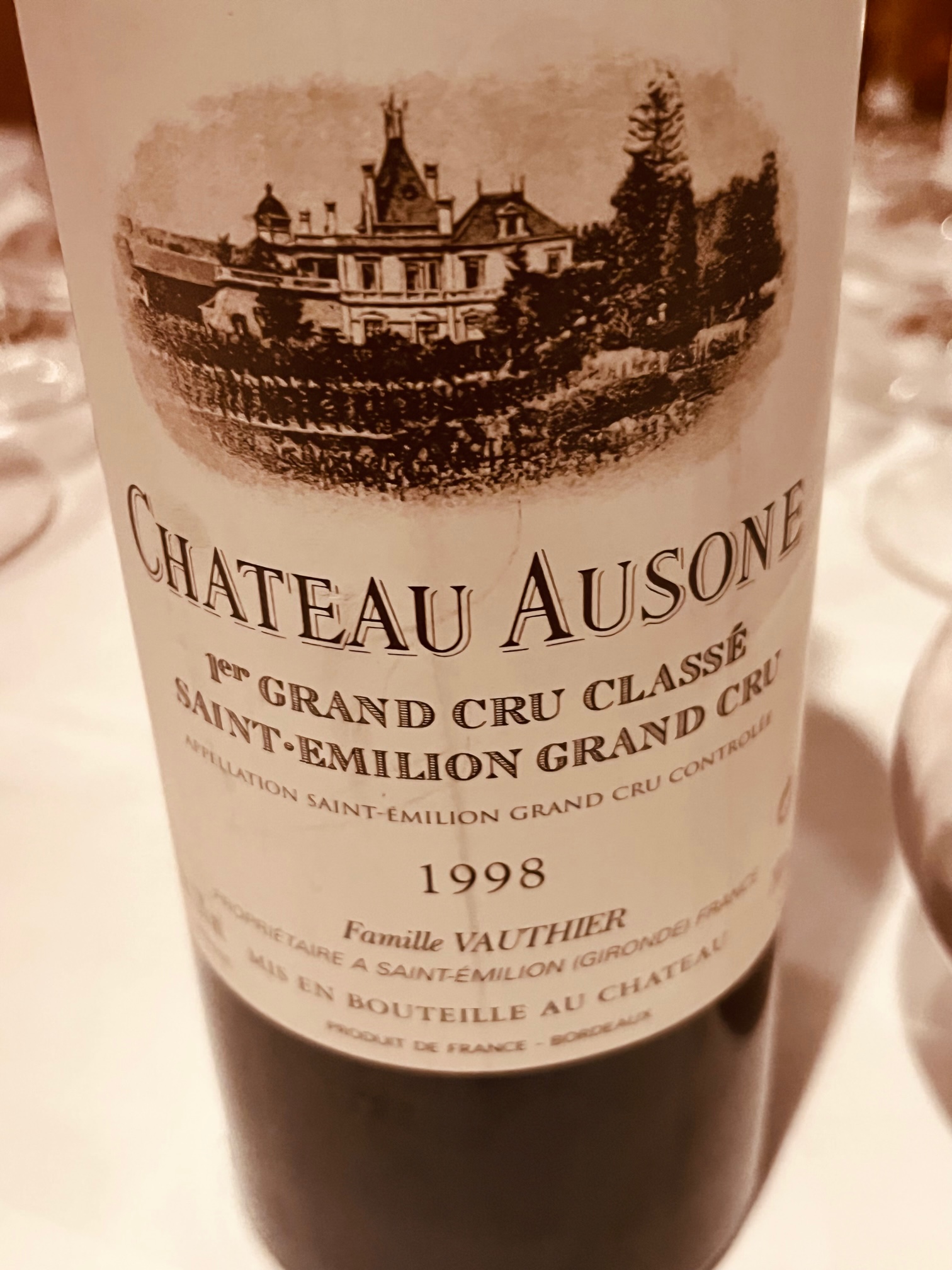
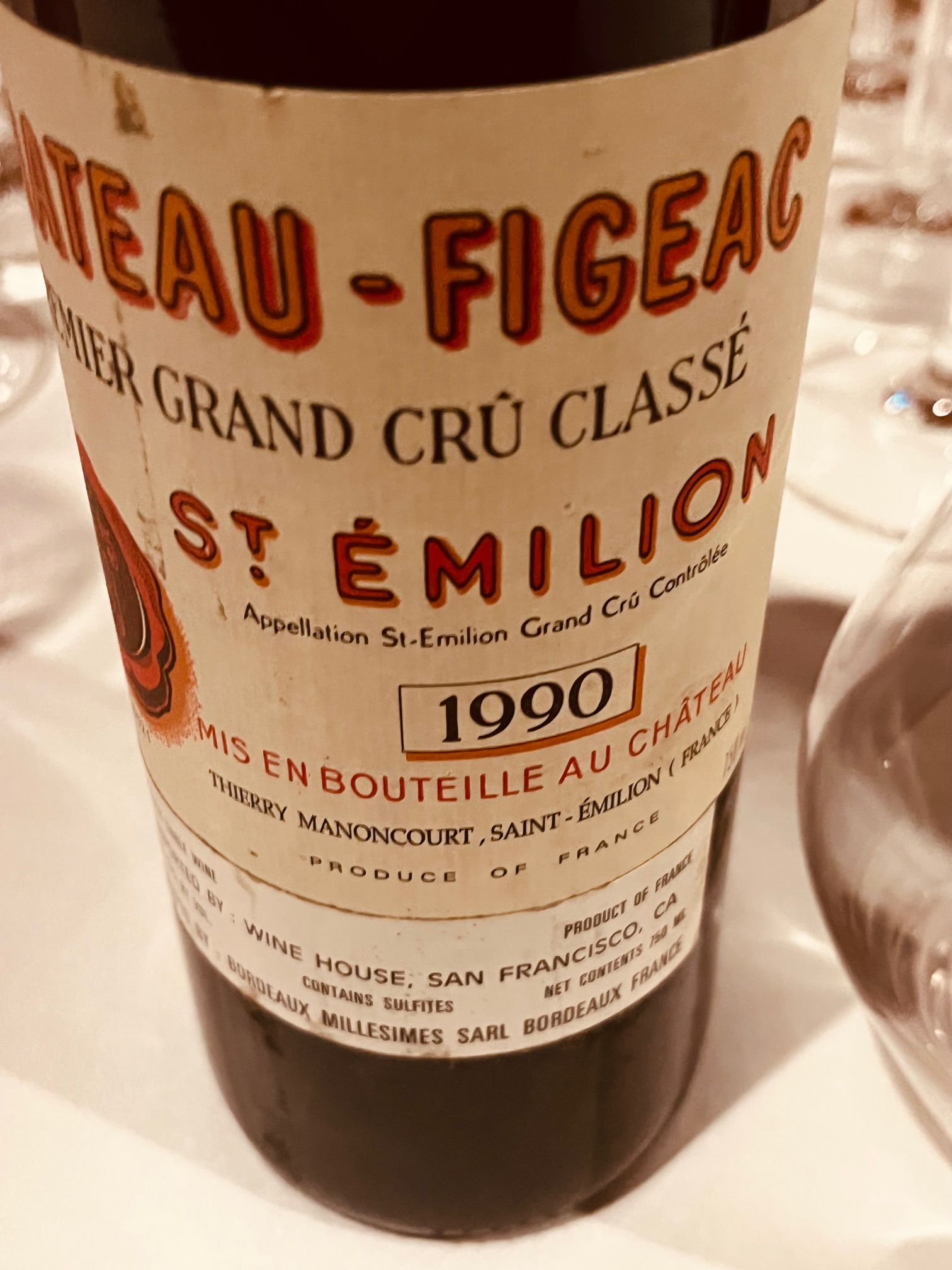

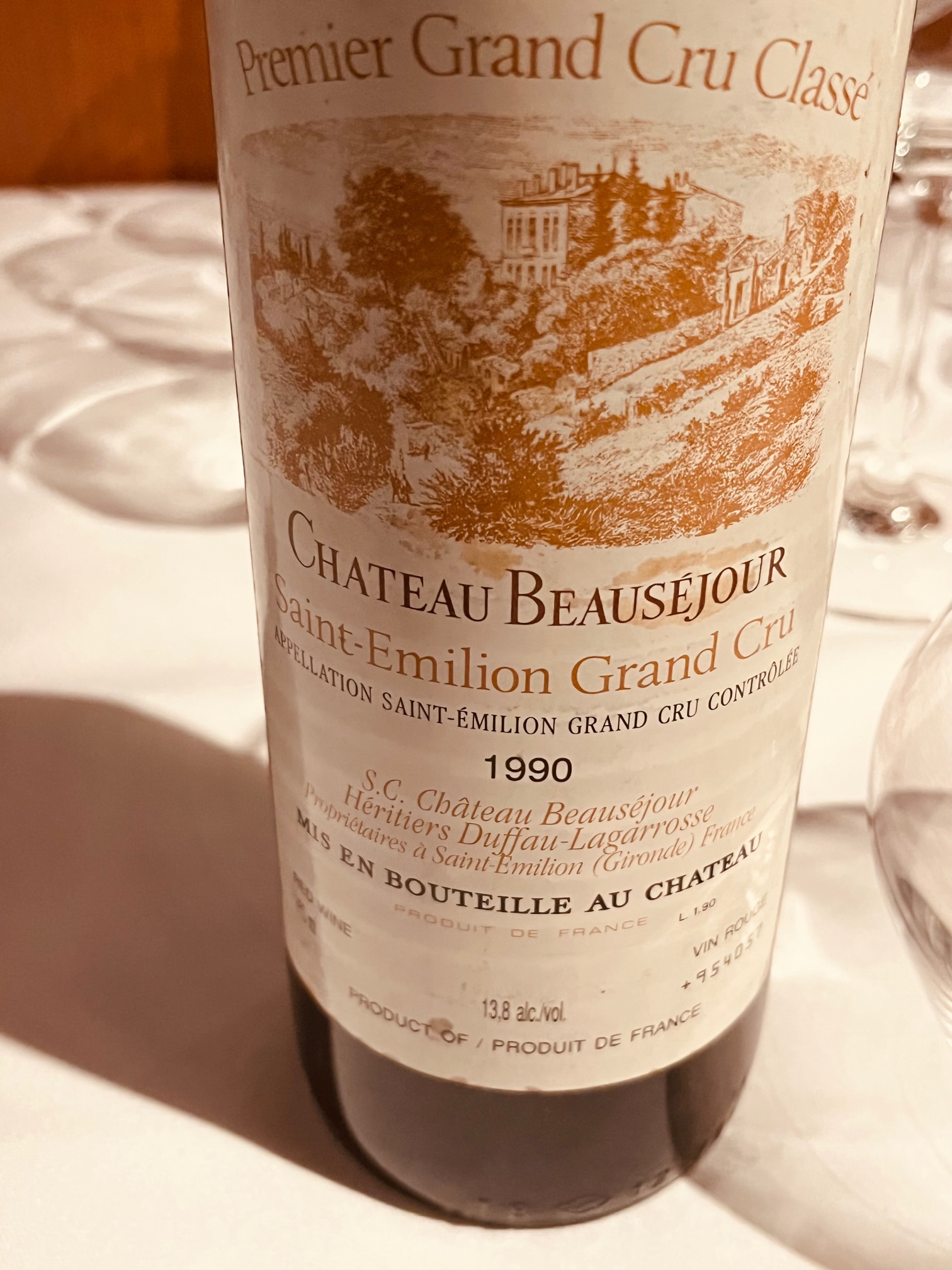
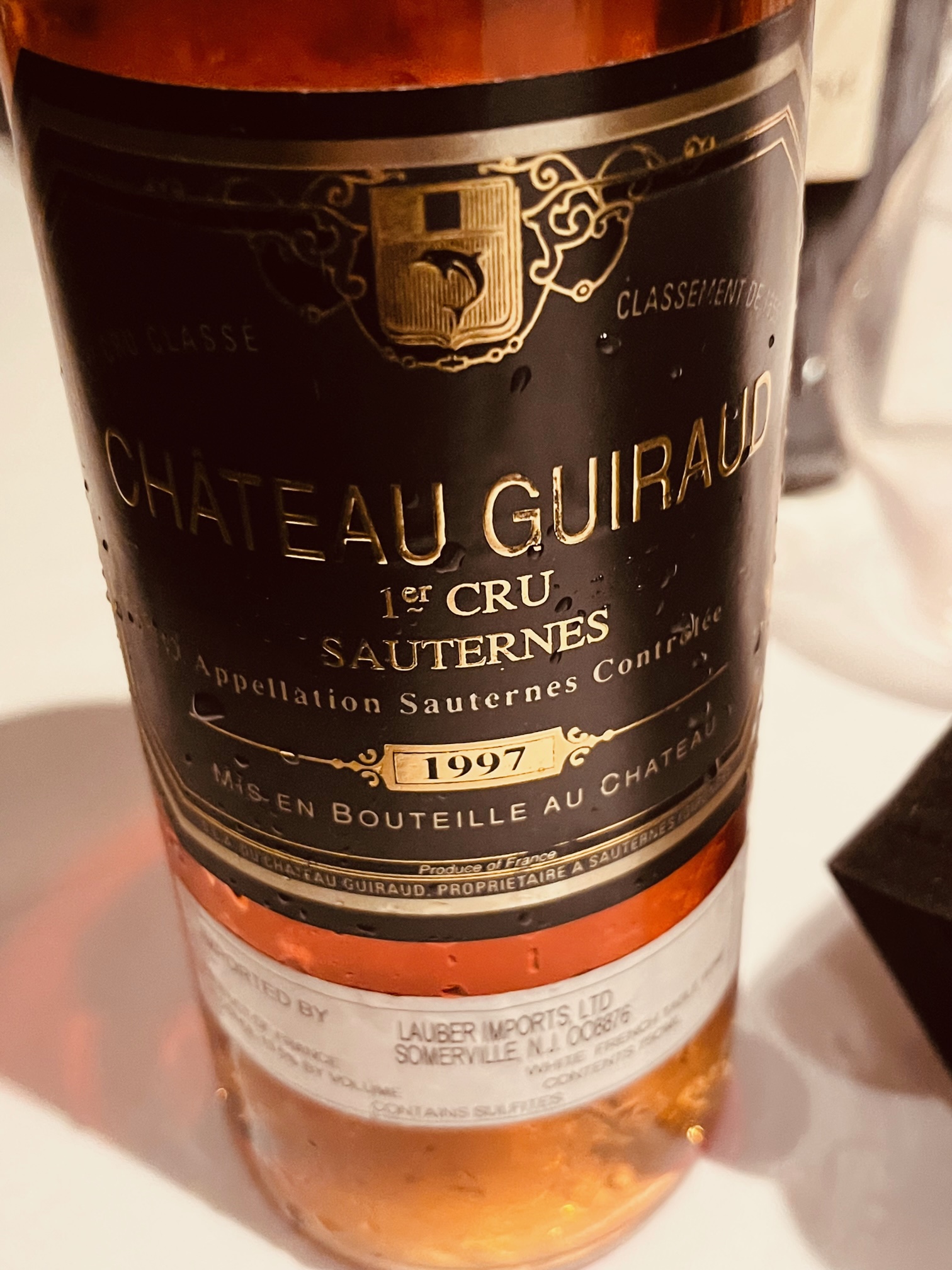

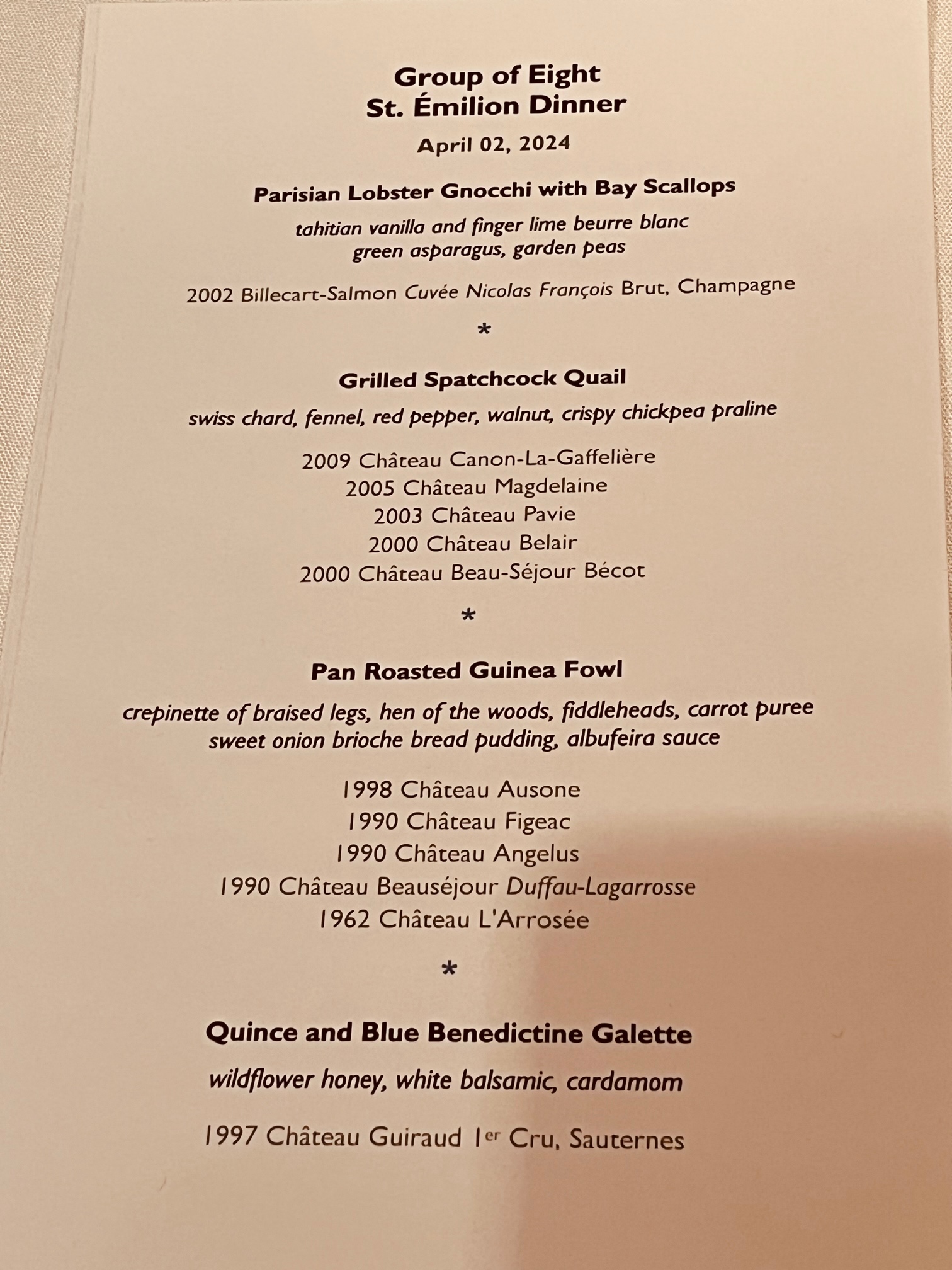
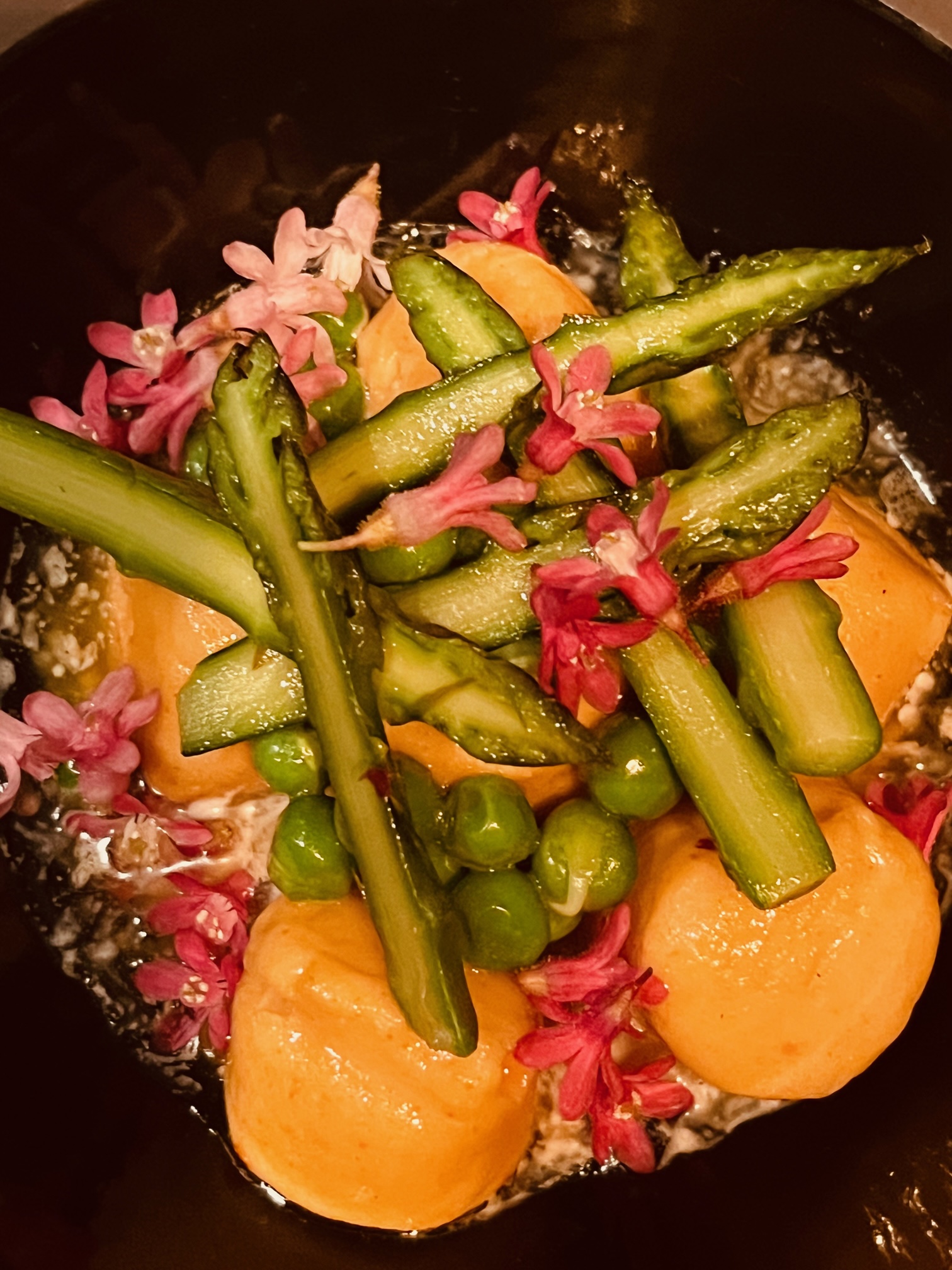
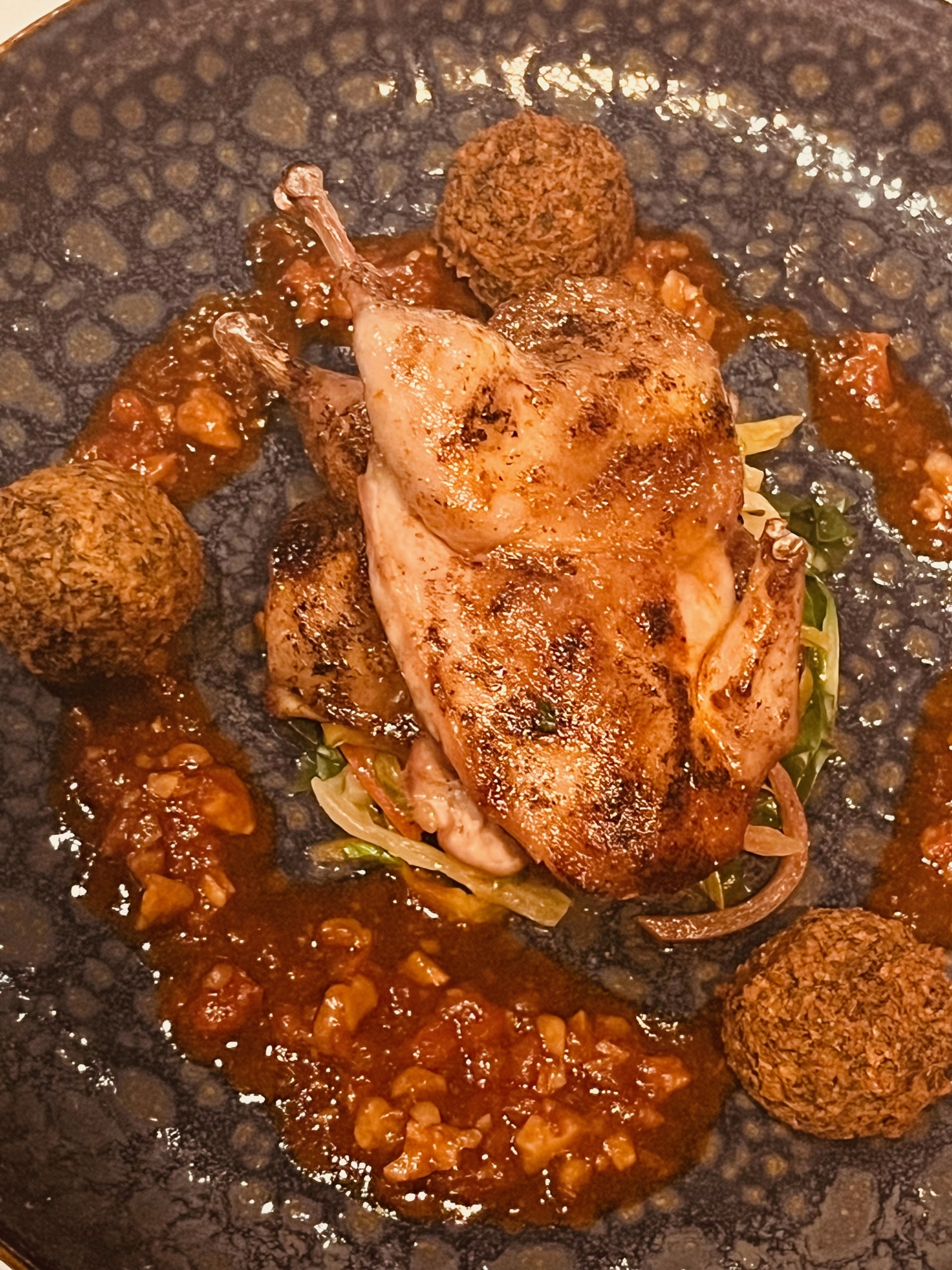
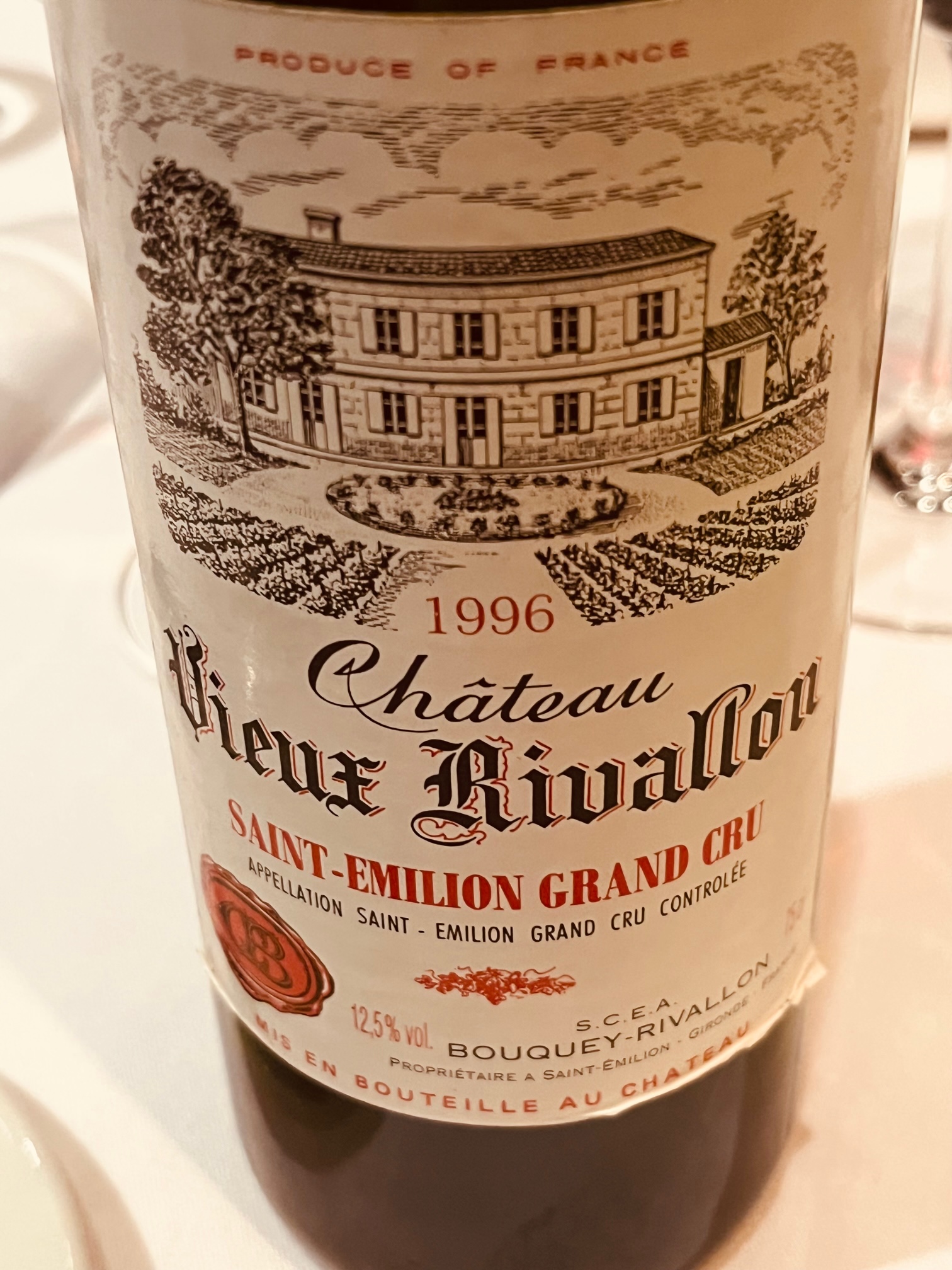
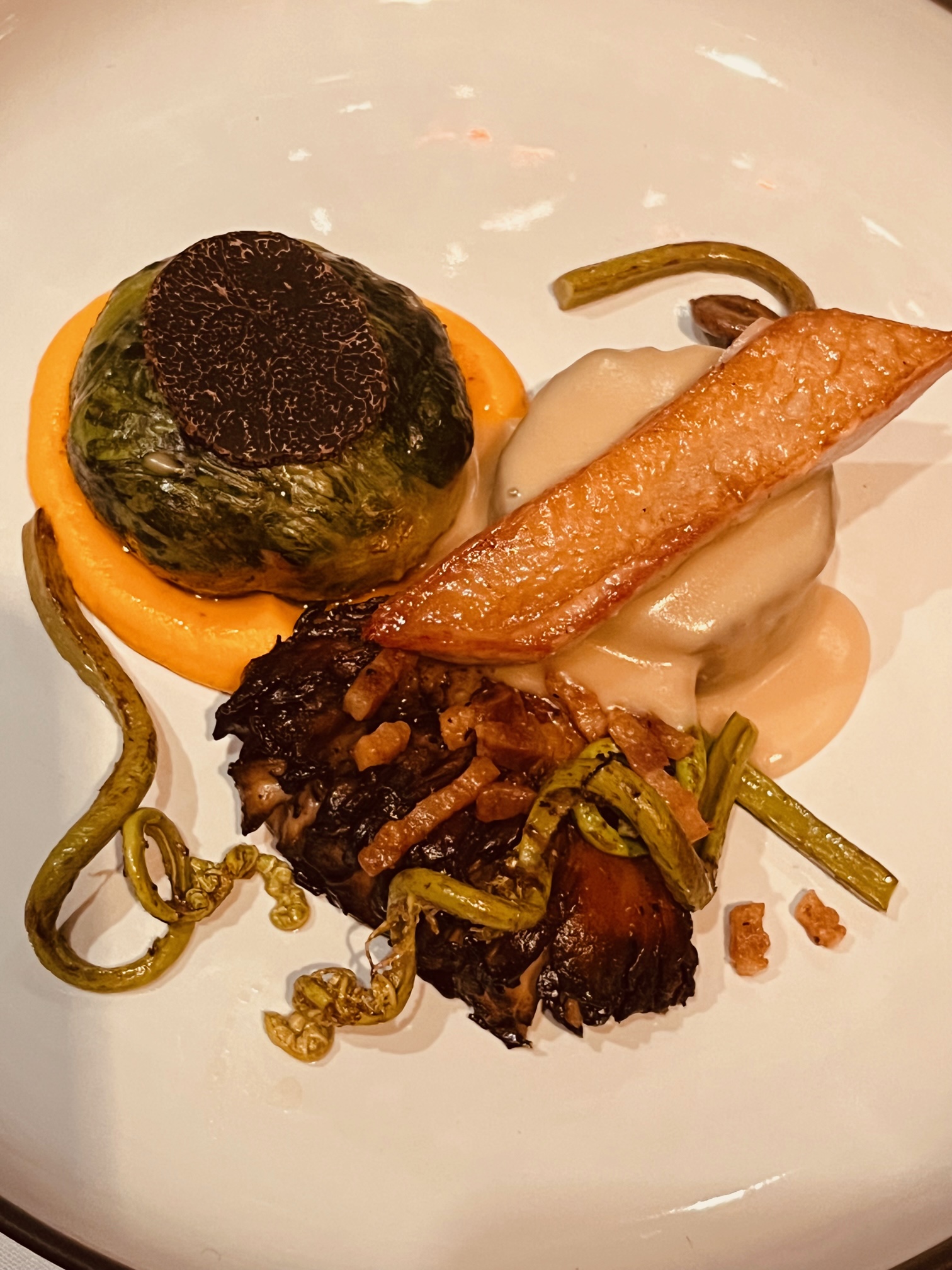
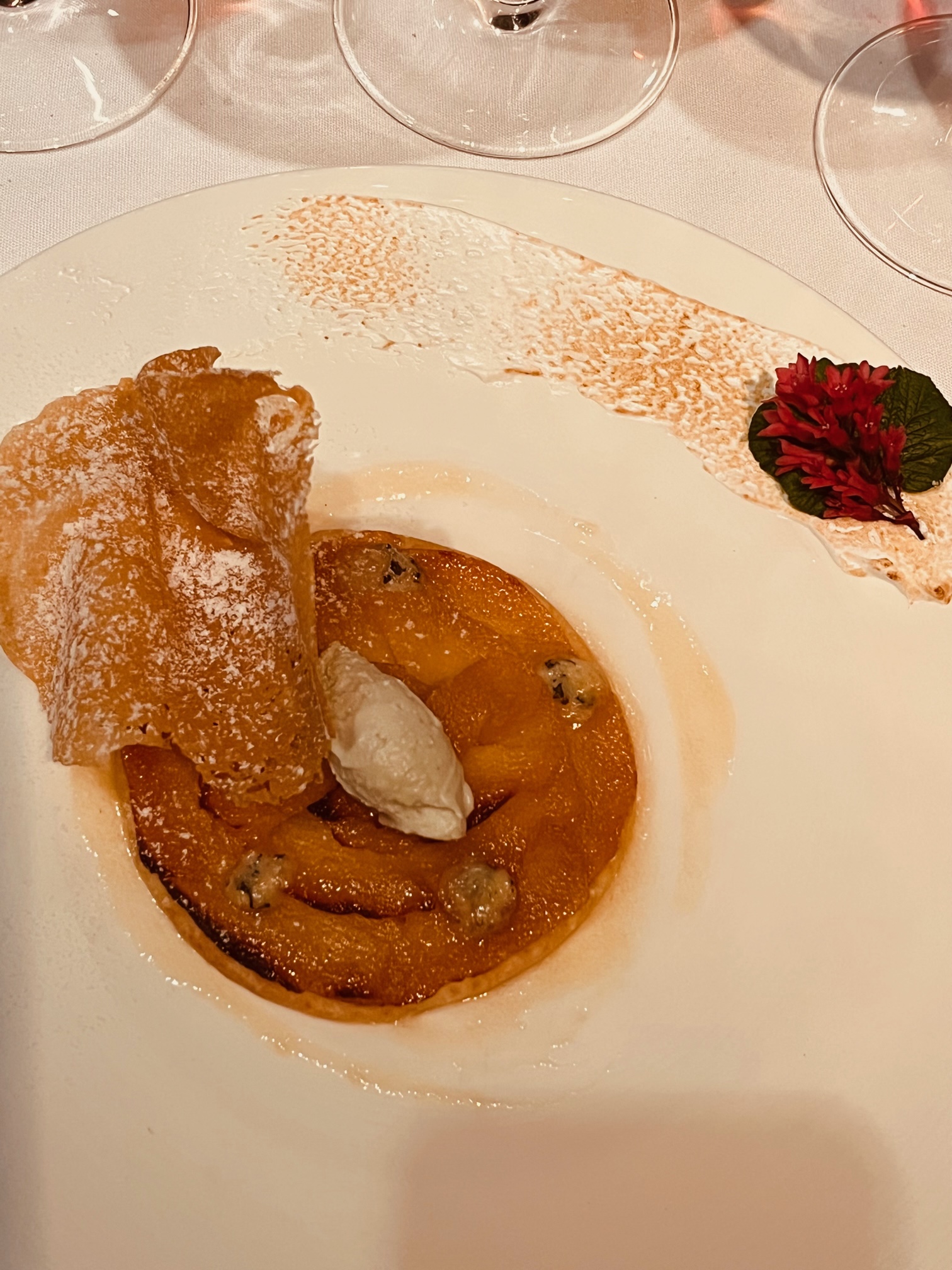


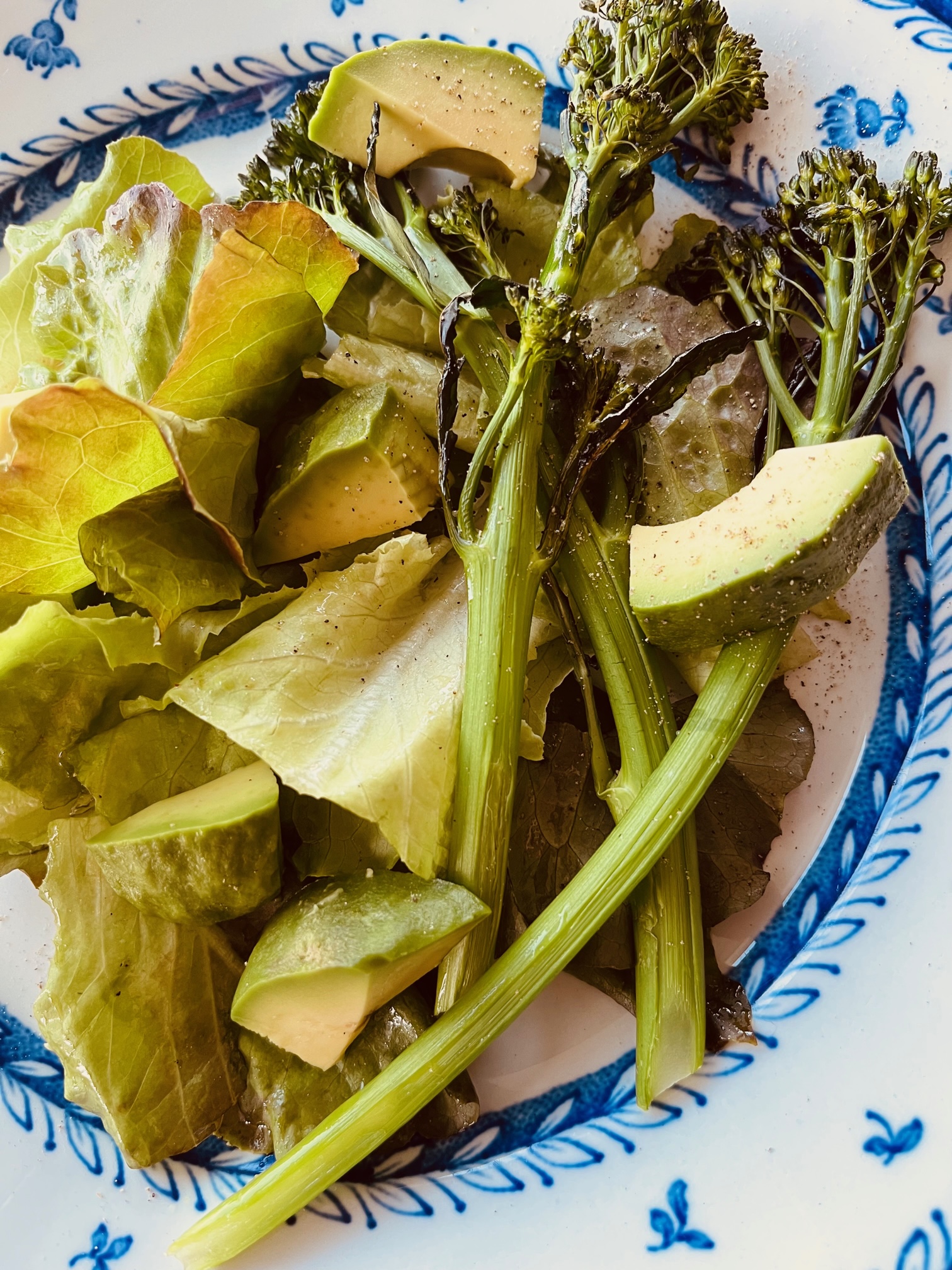
You might also like:
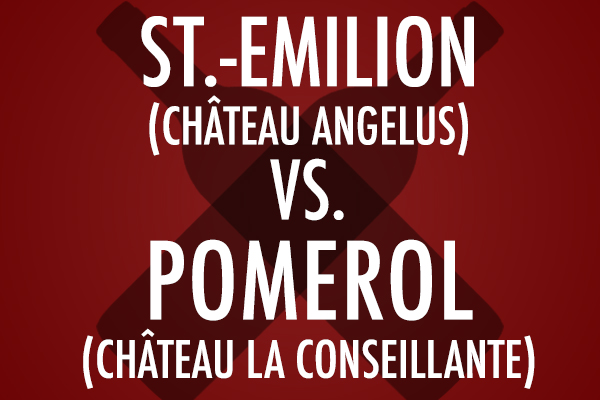 | 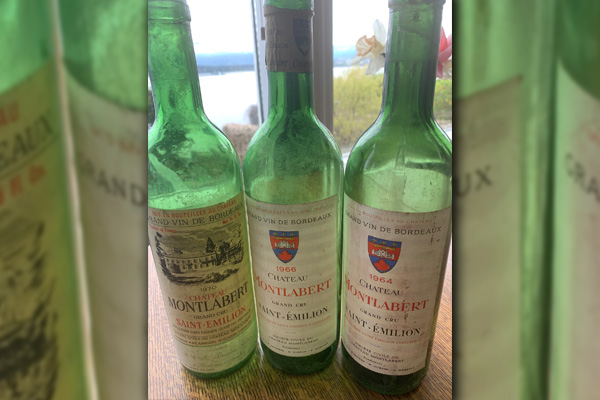 |  |


